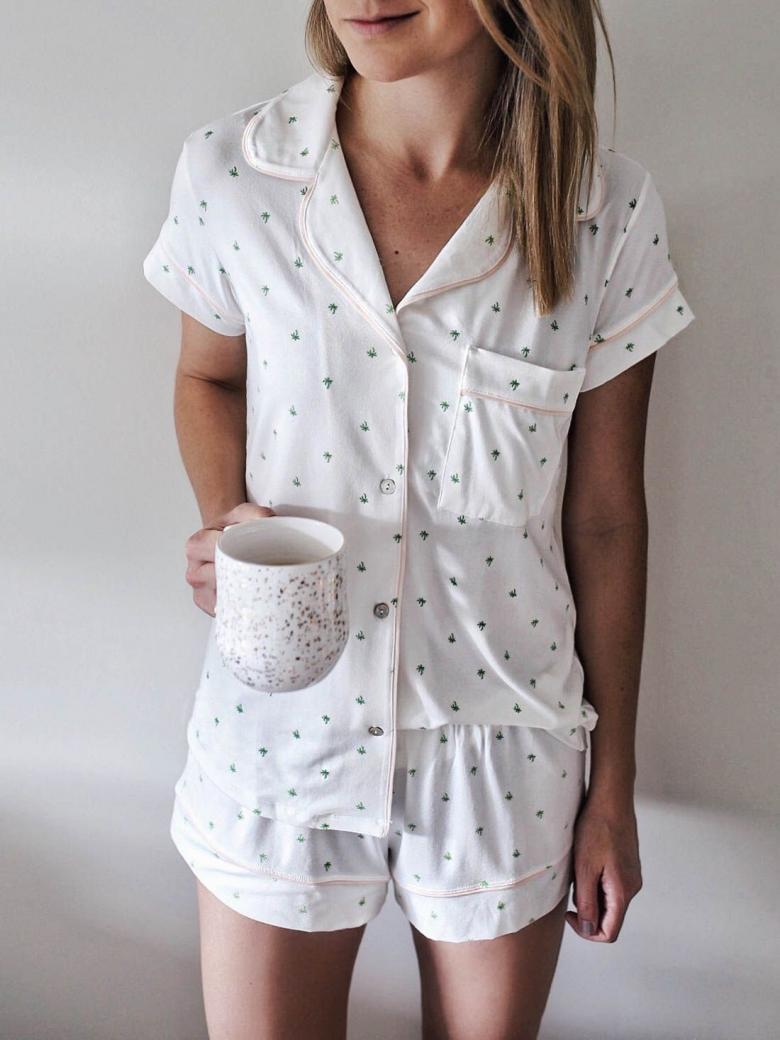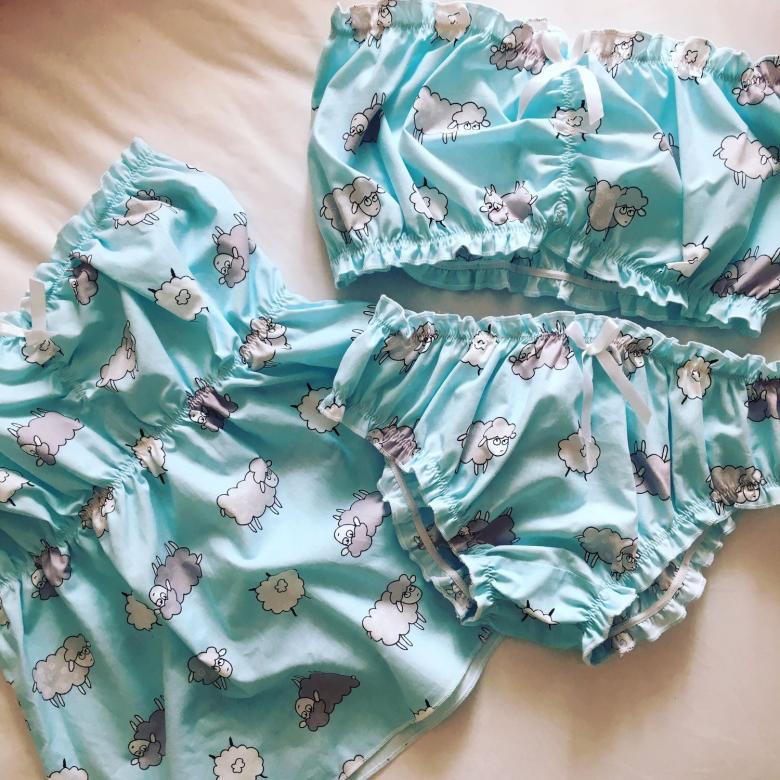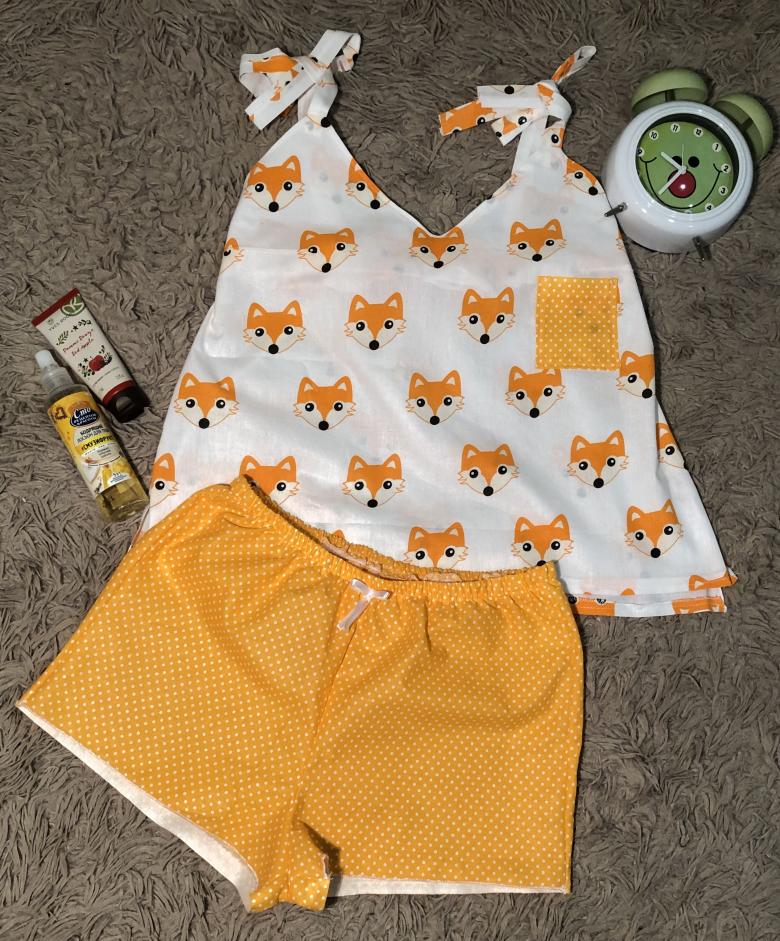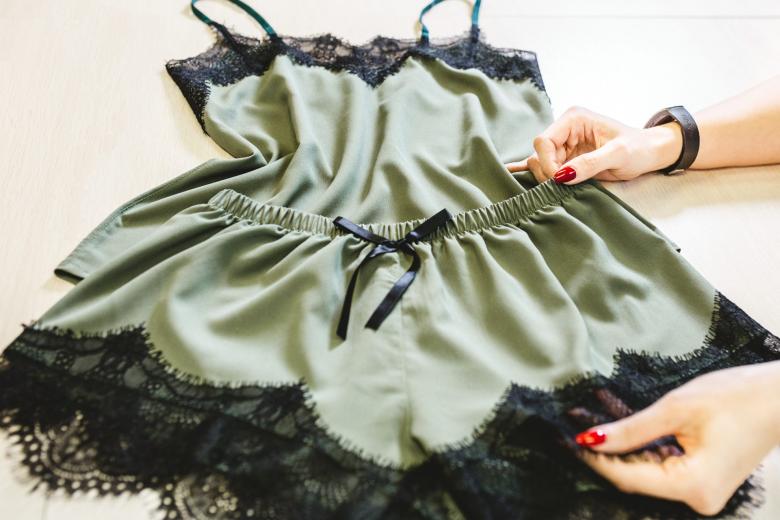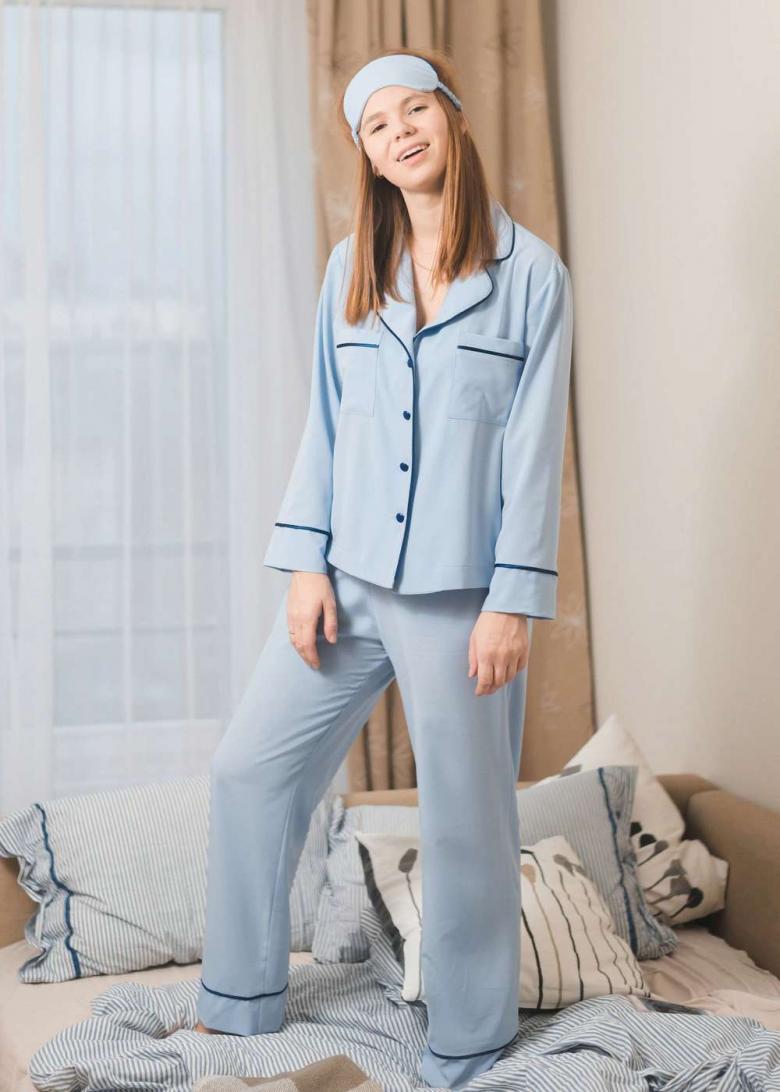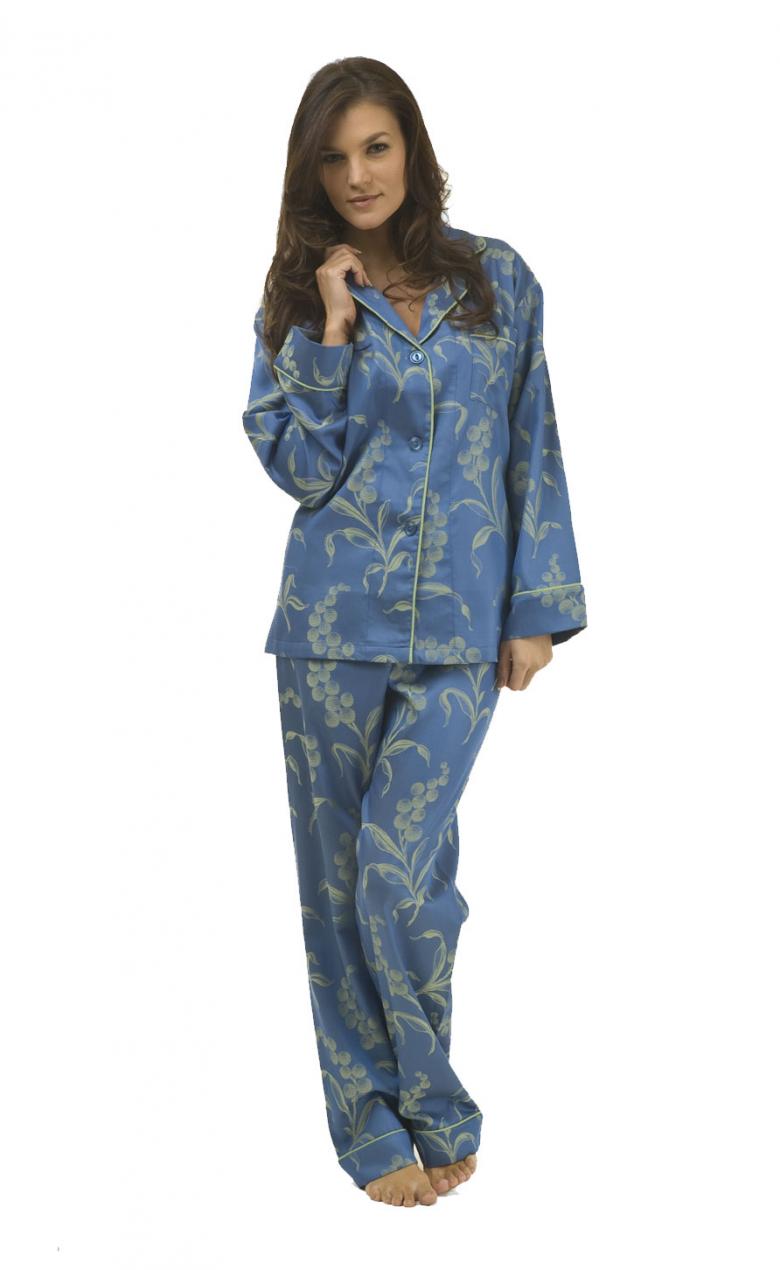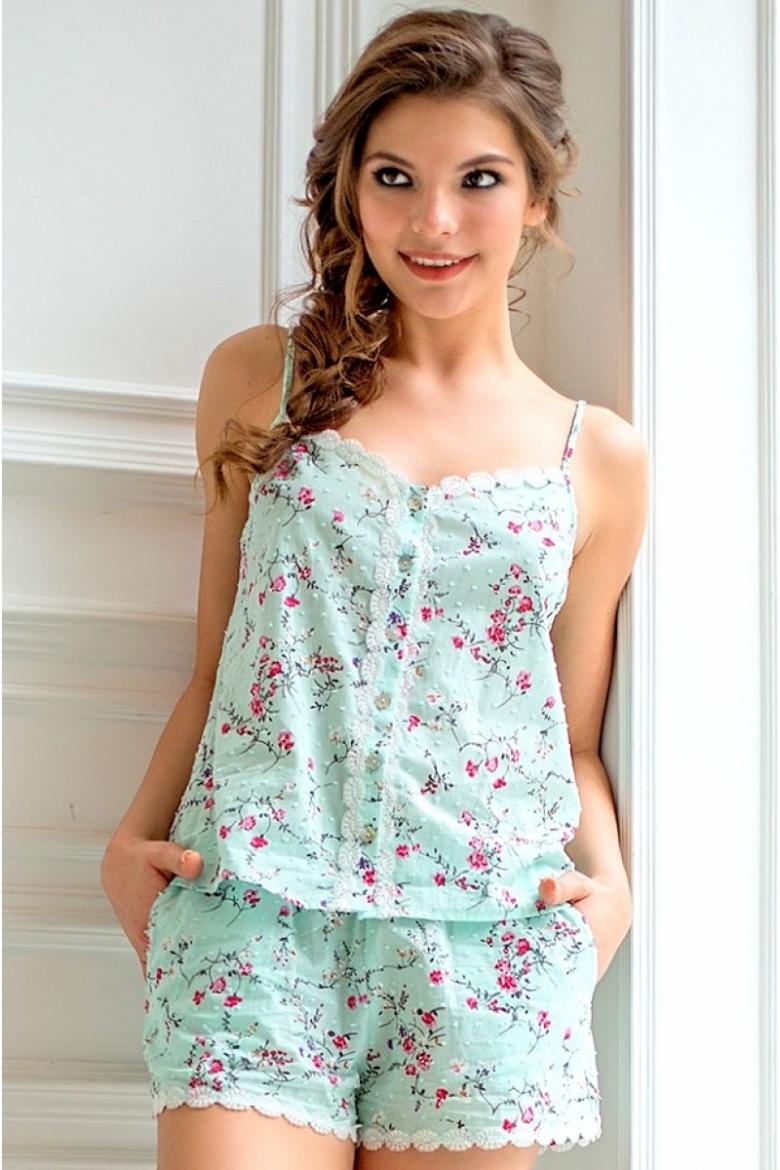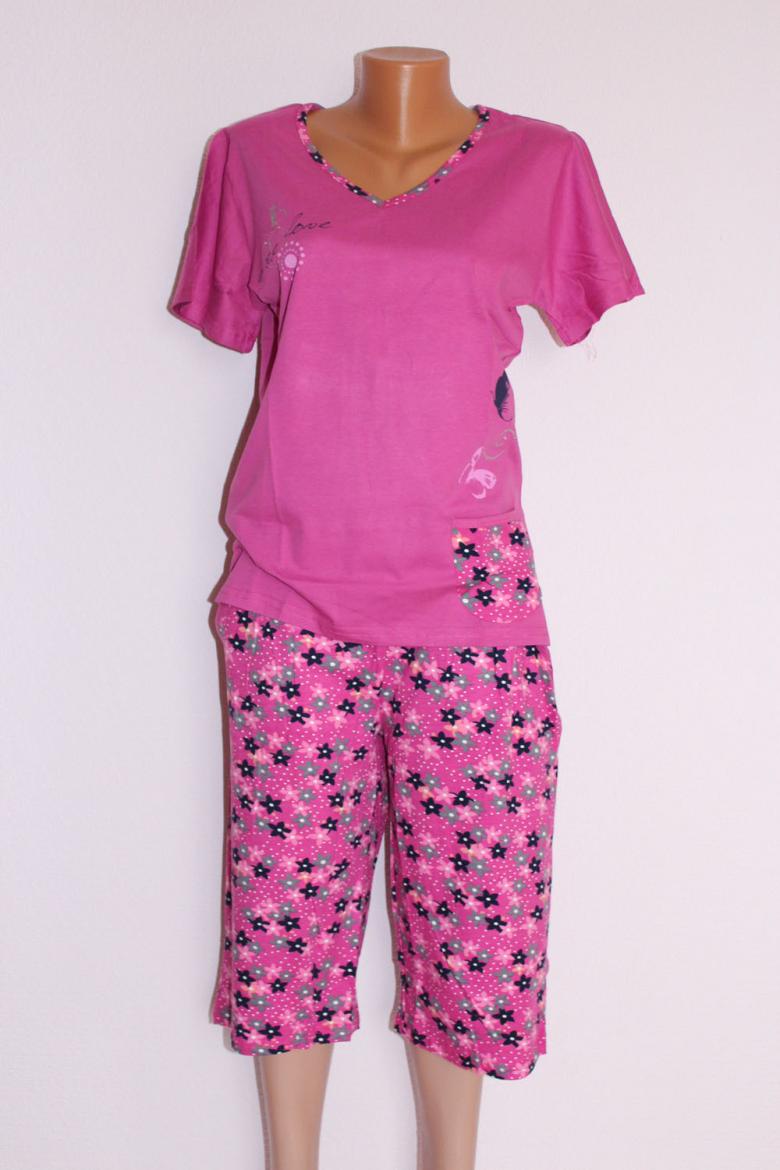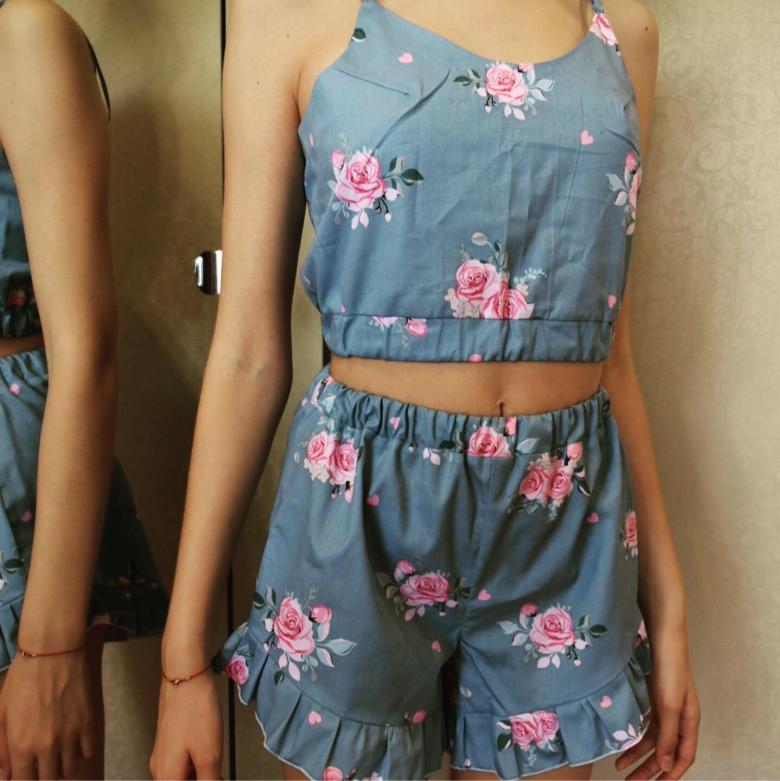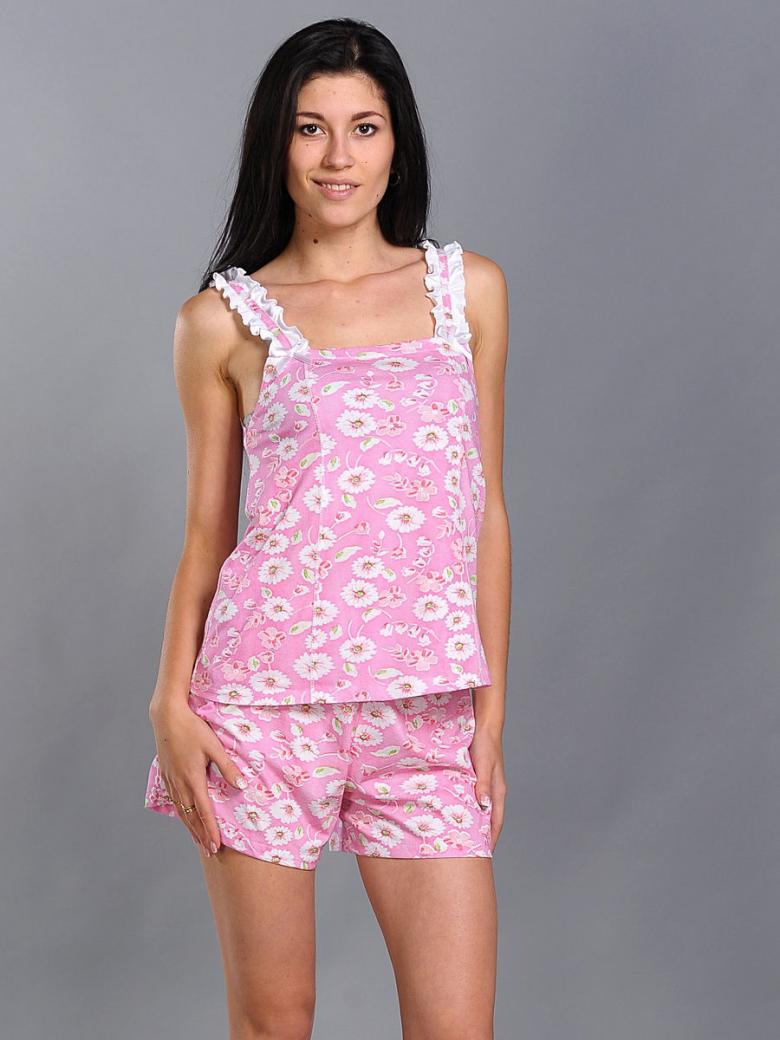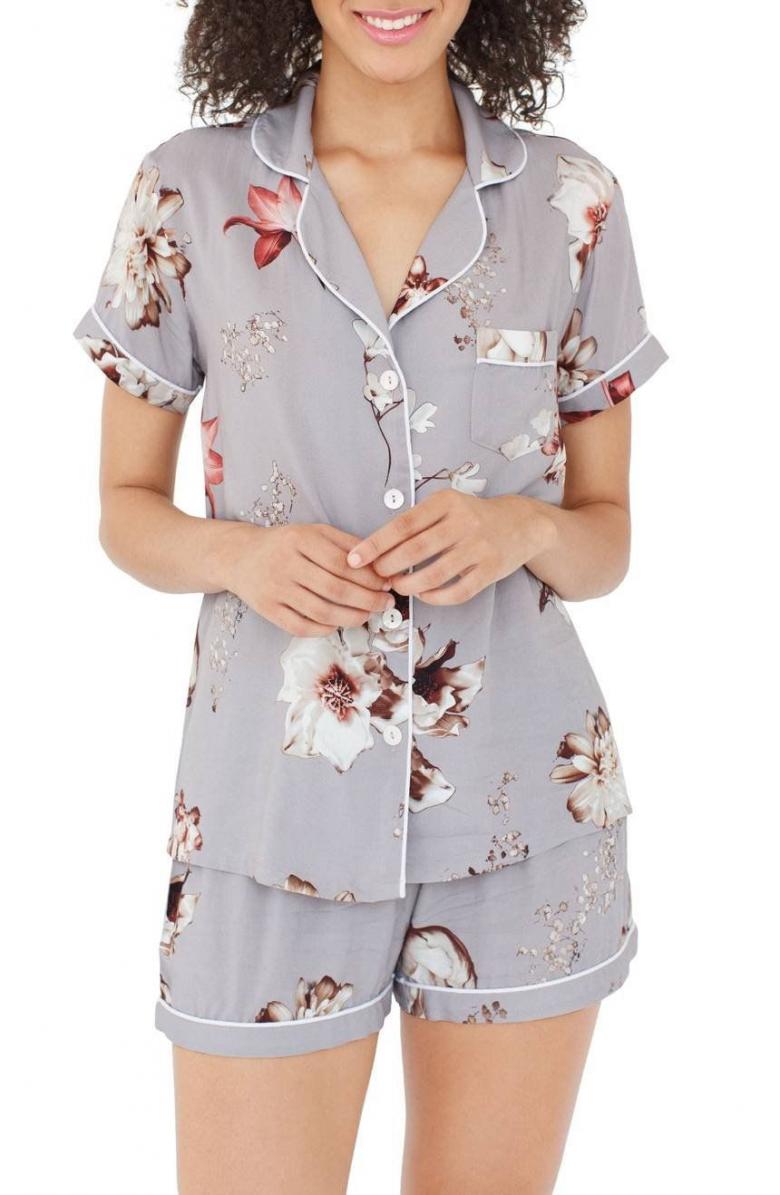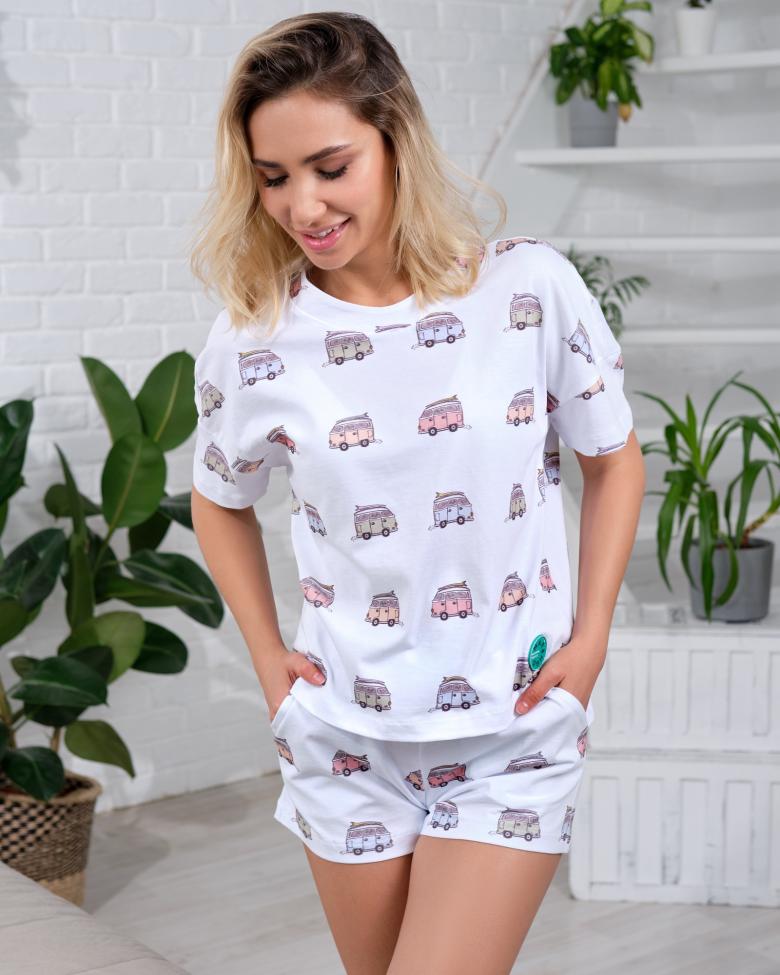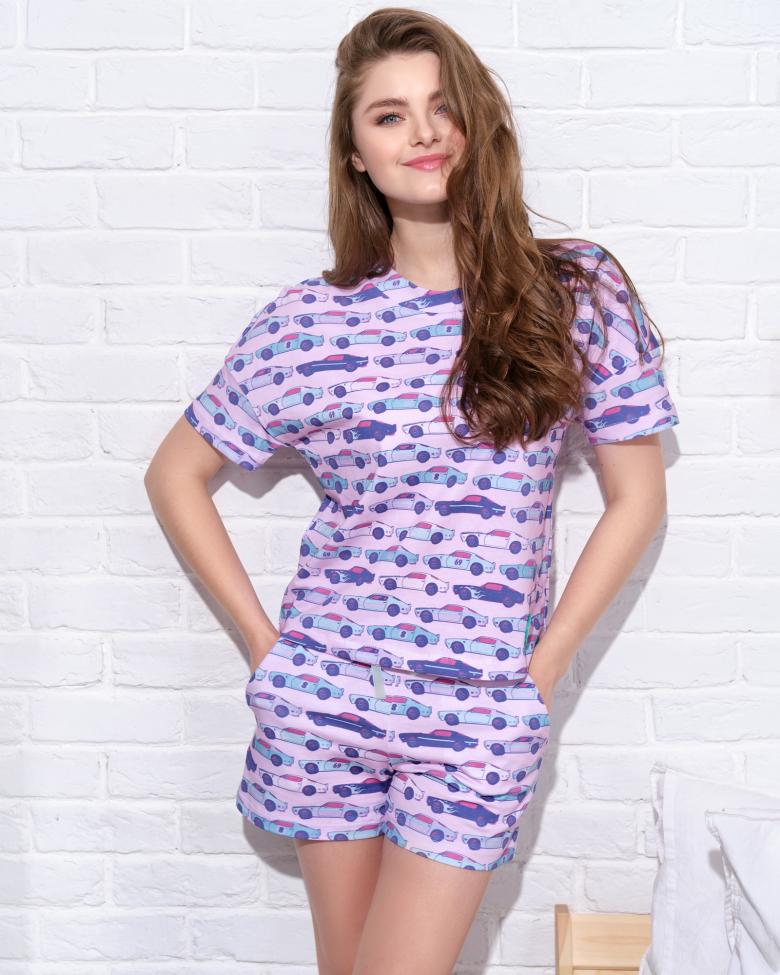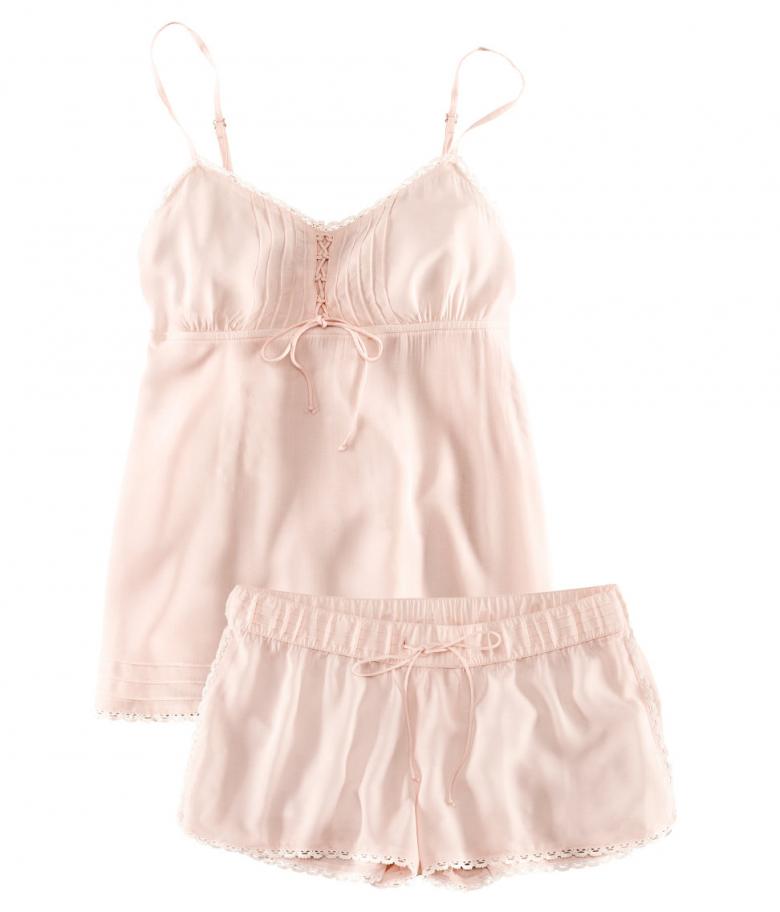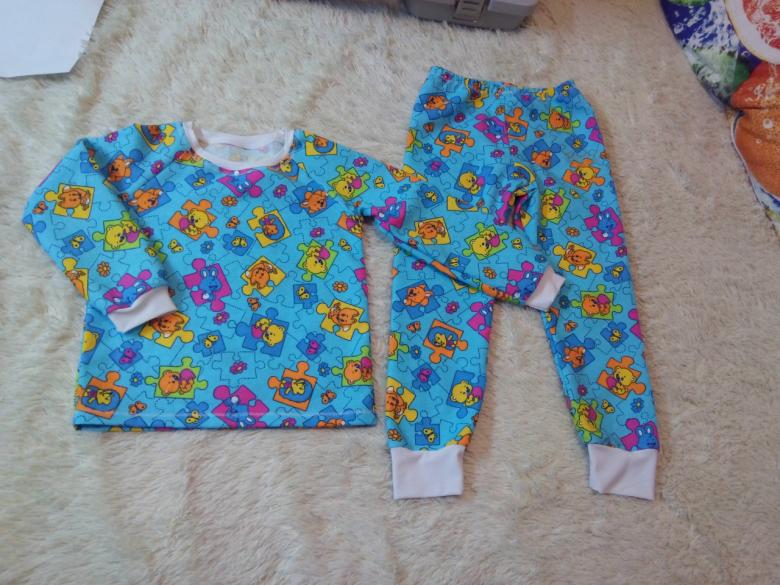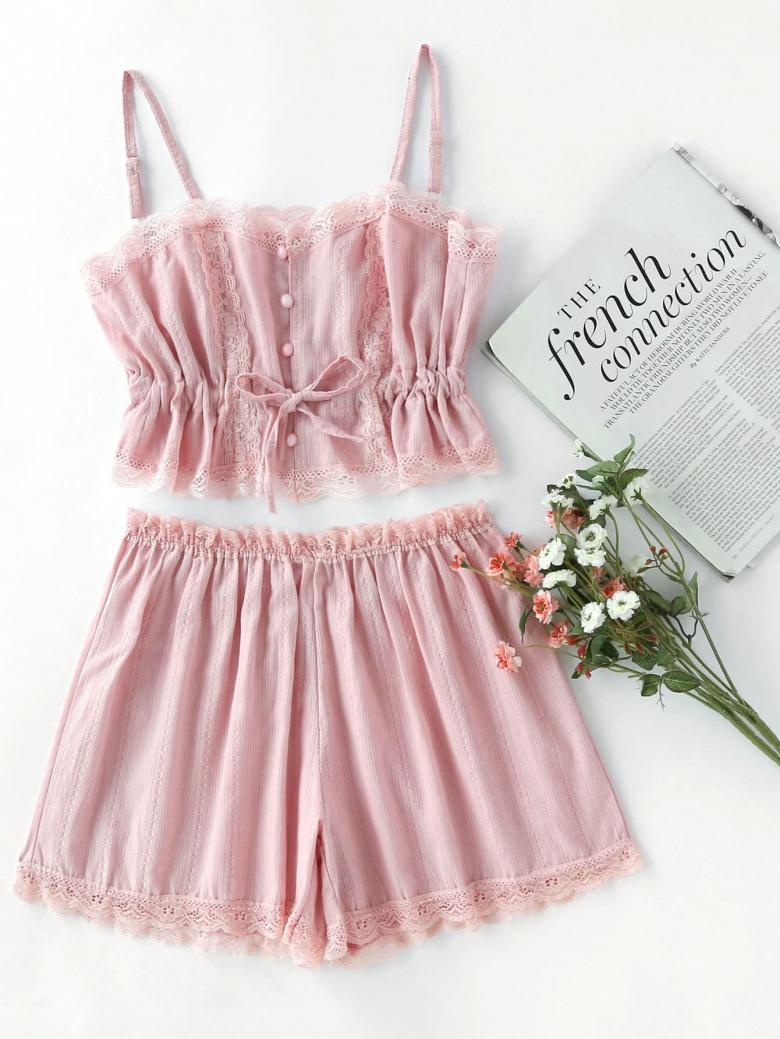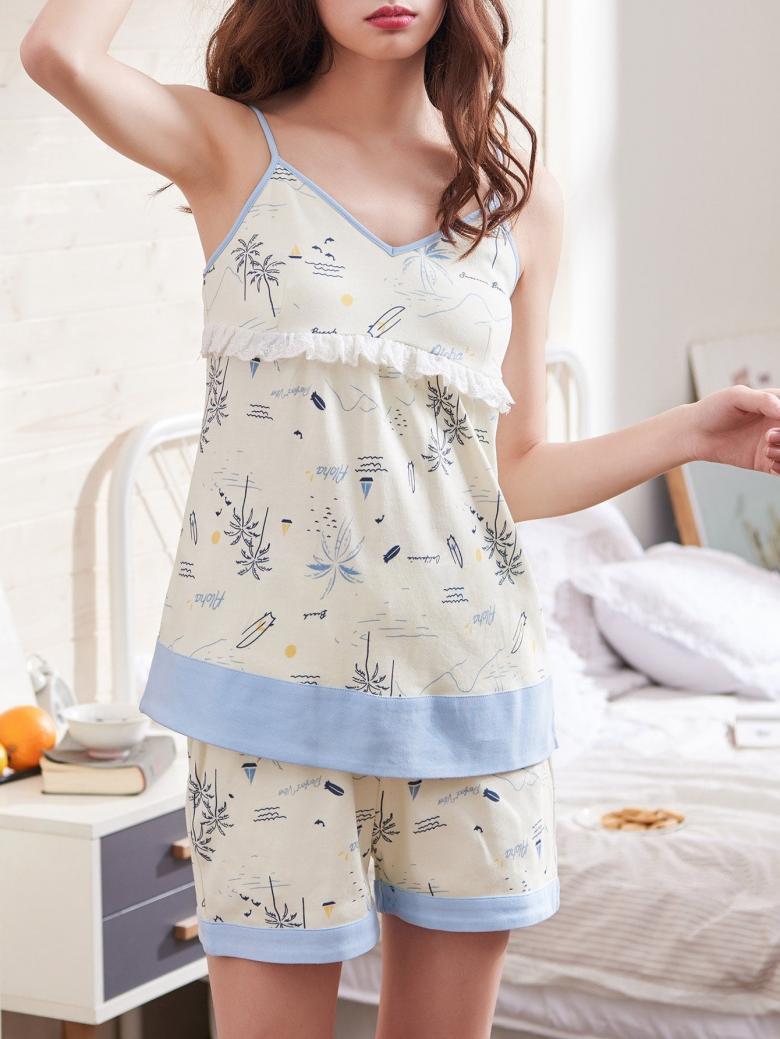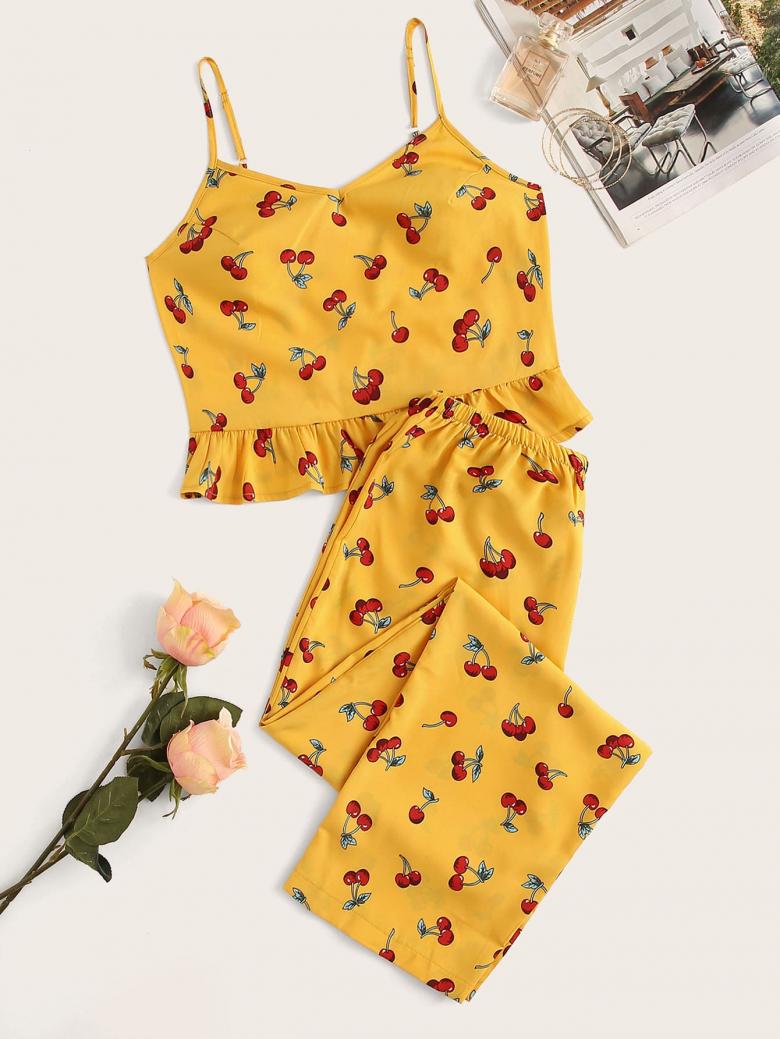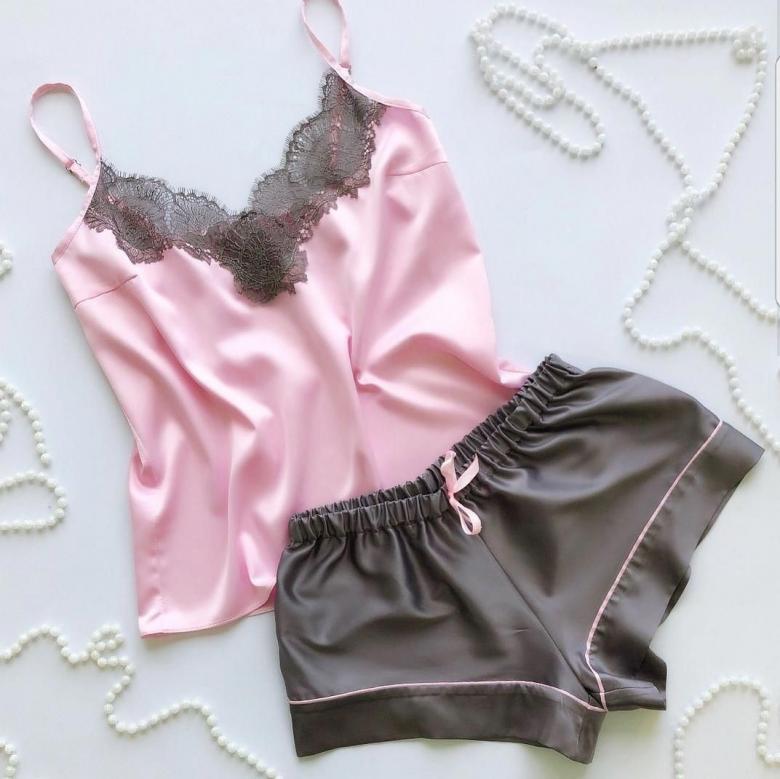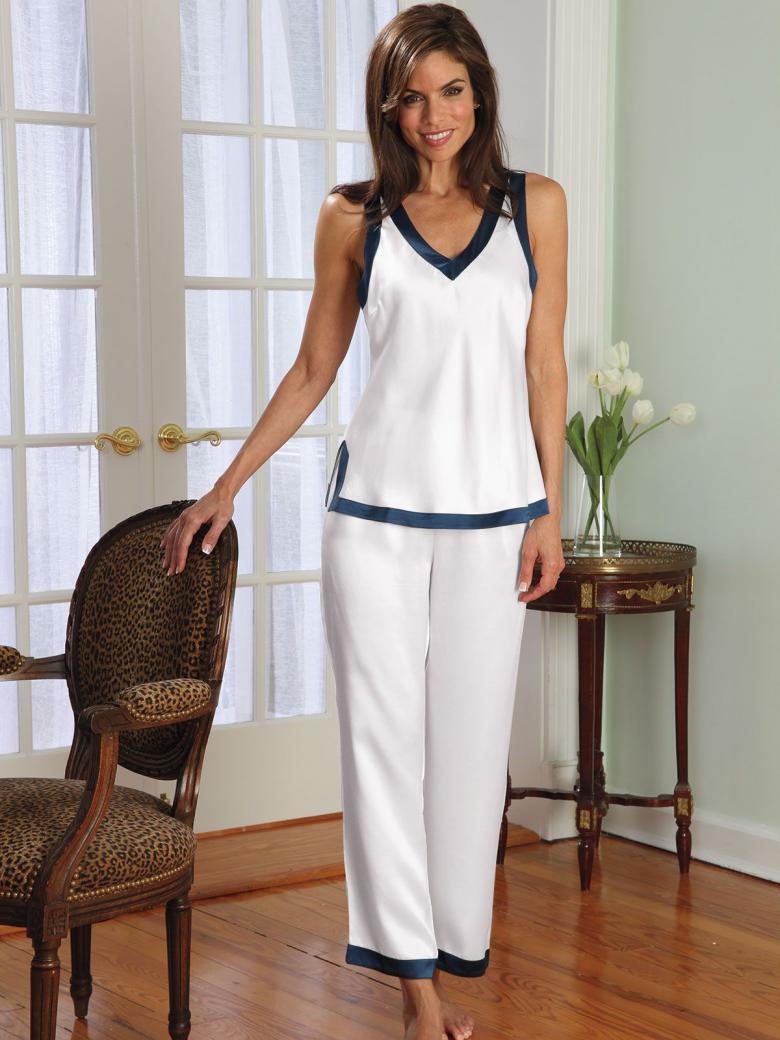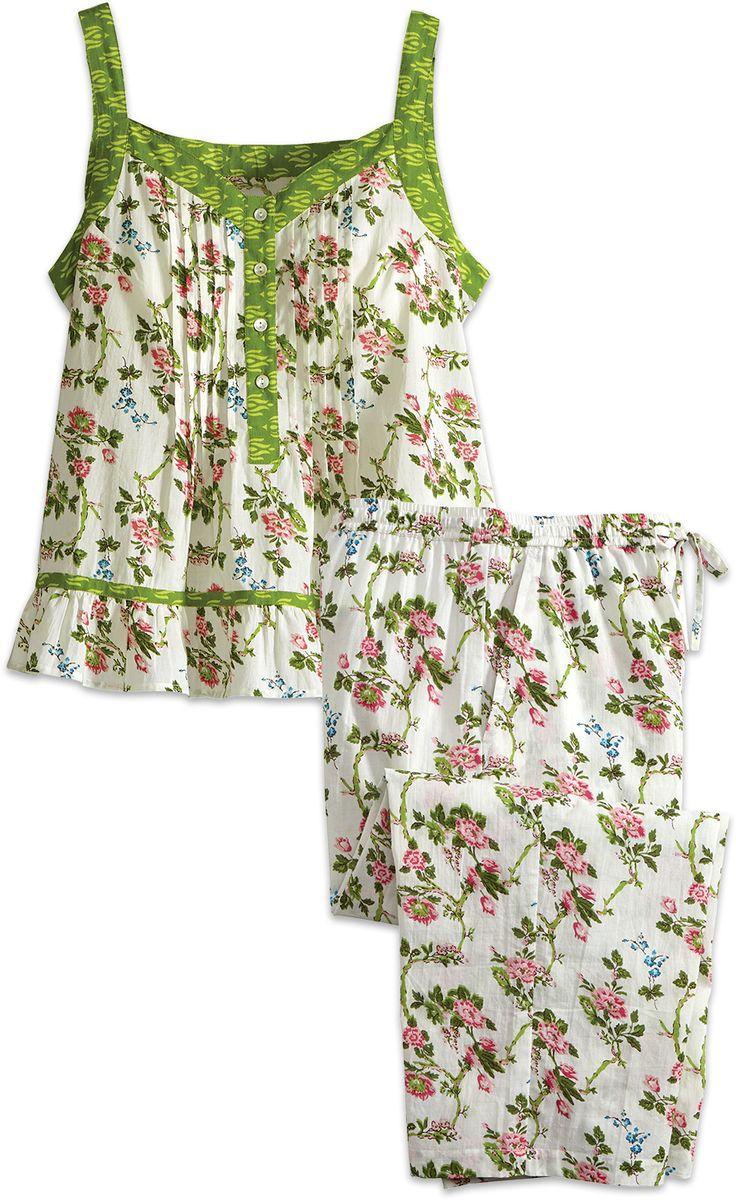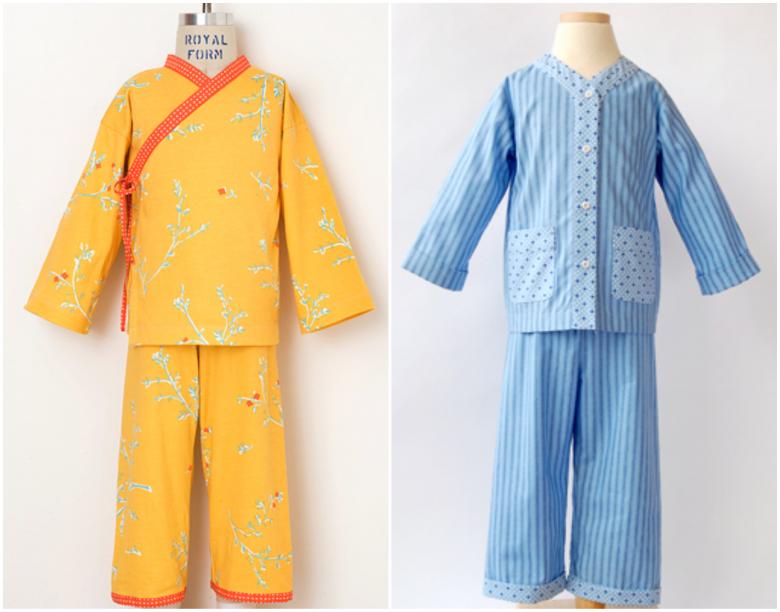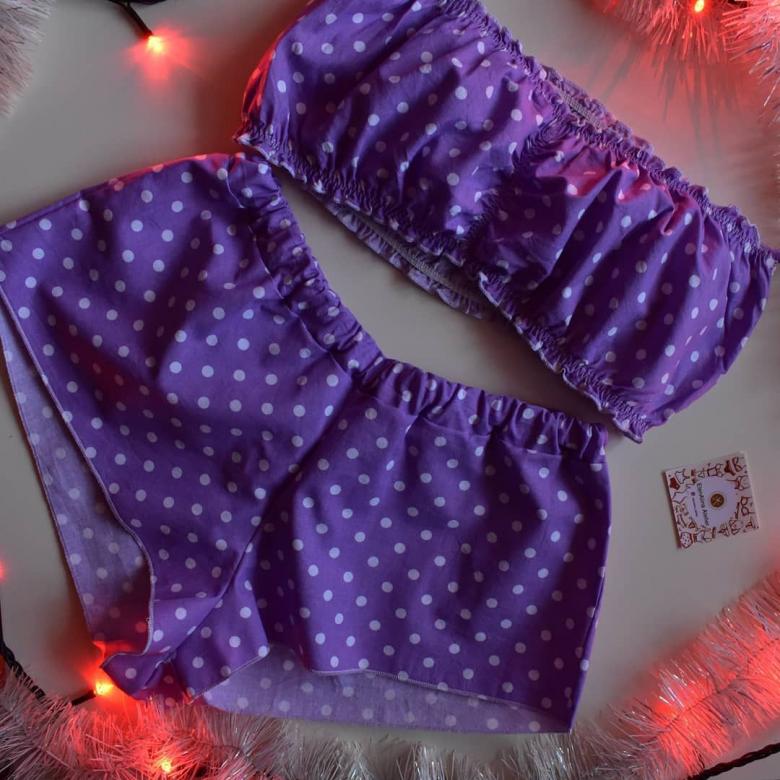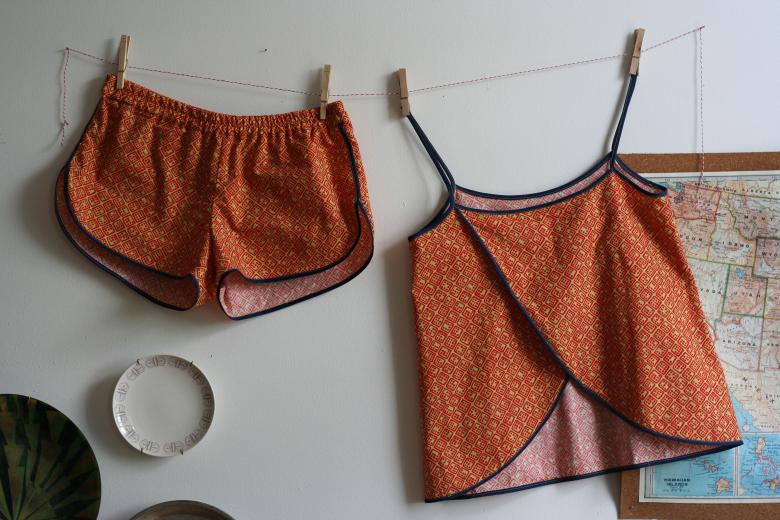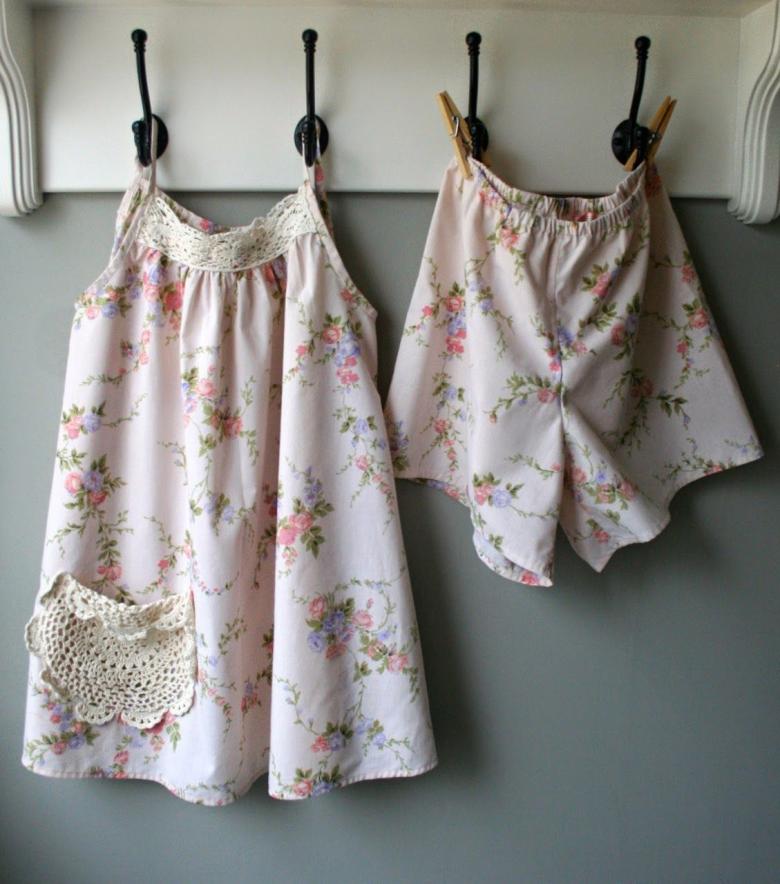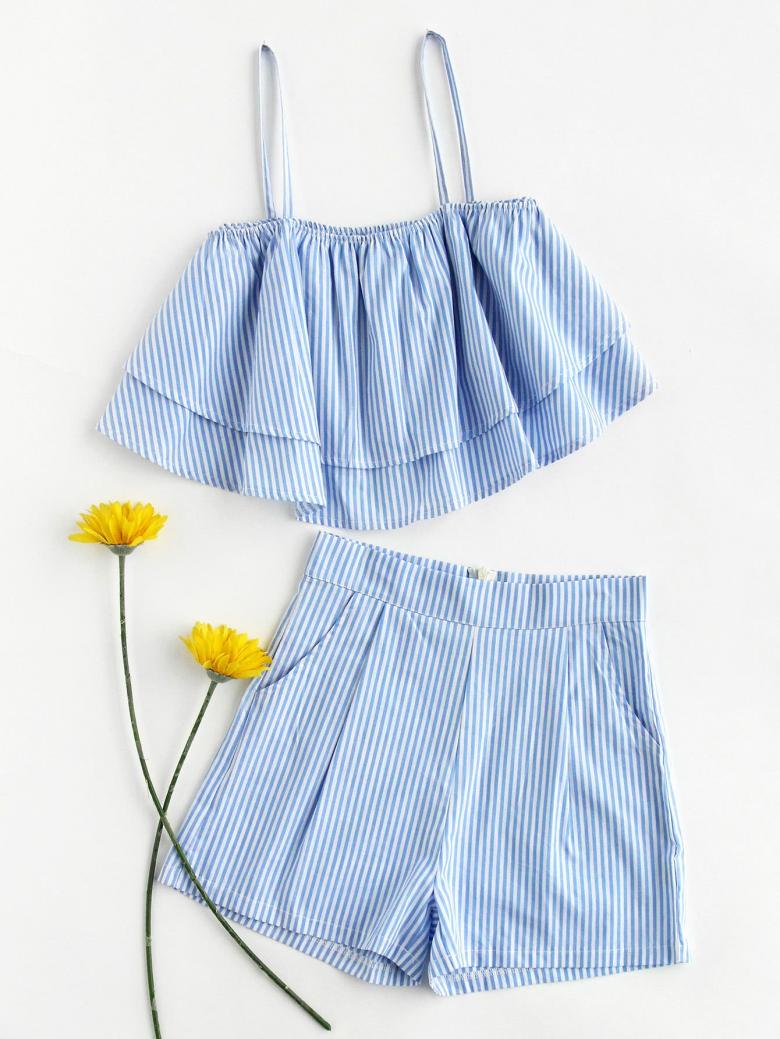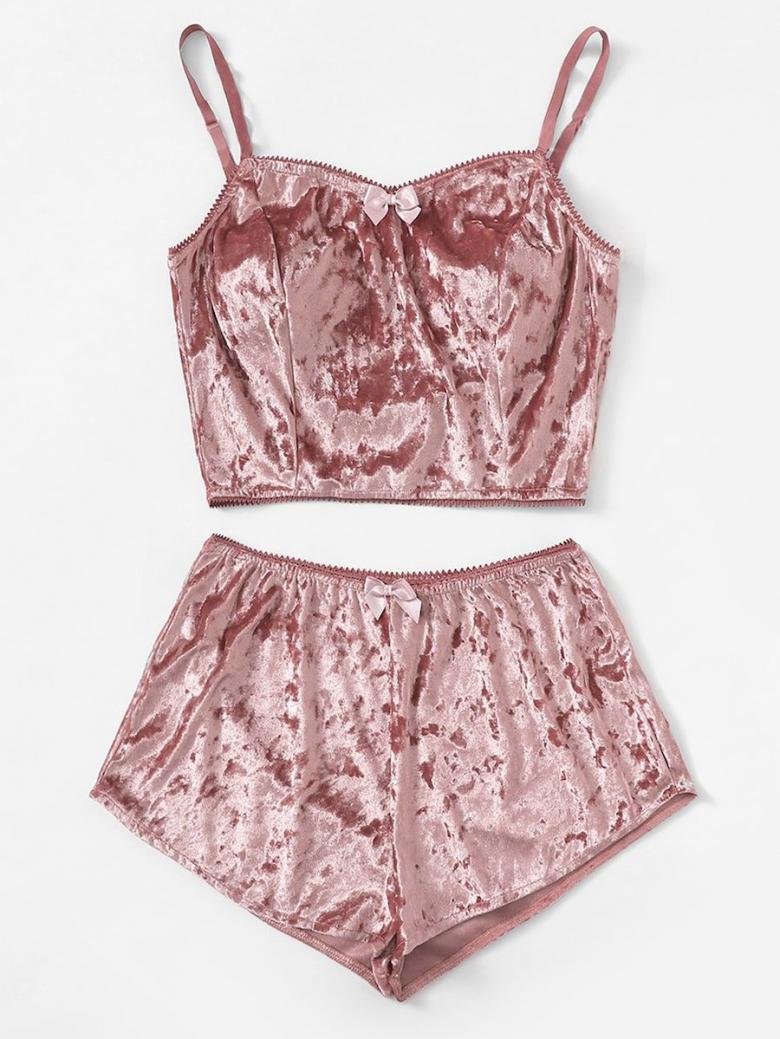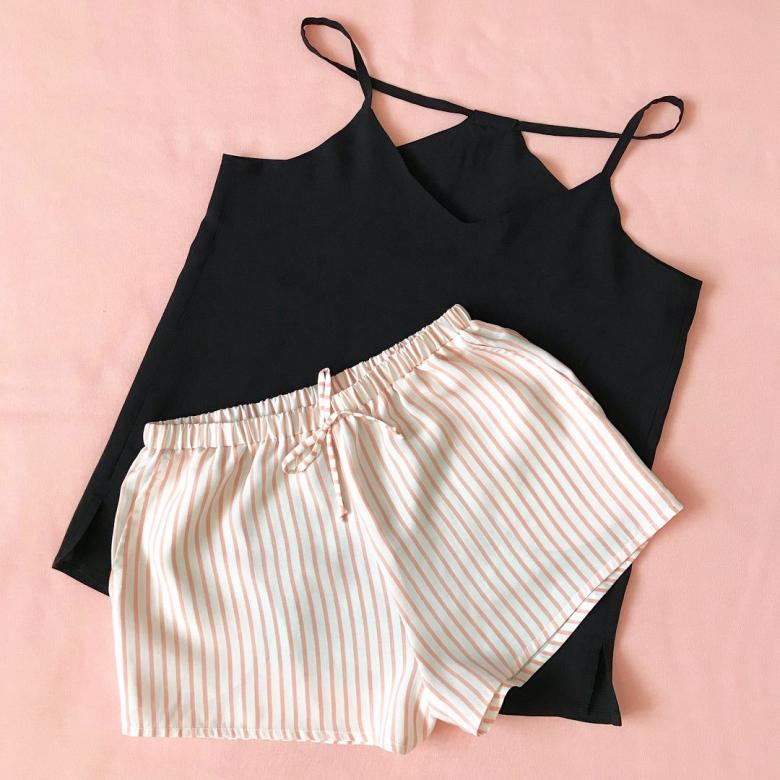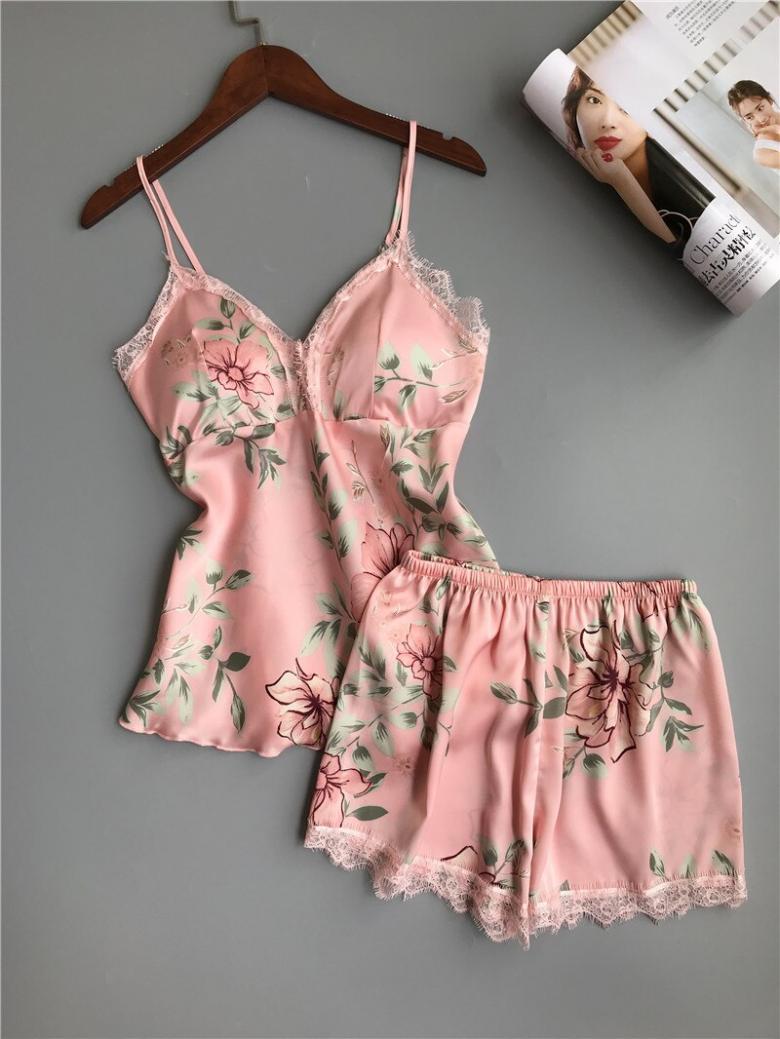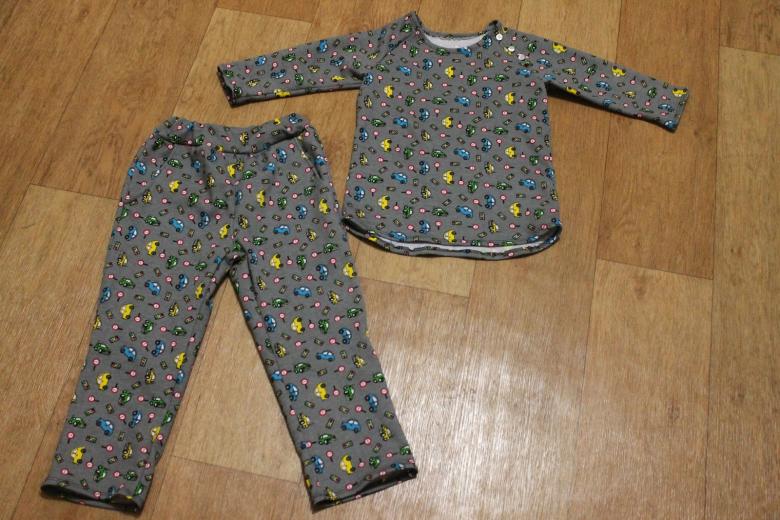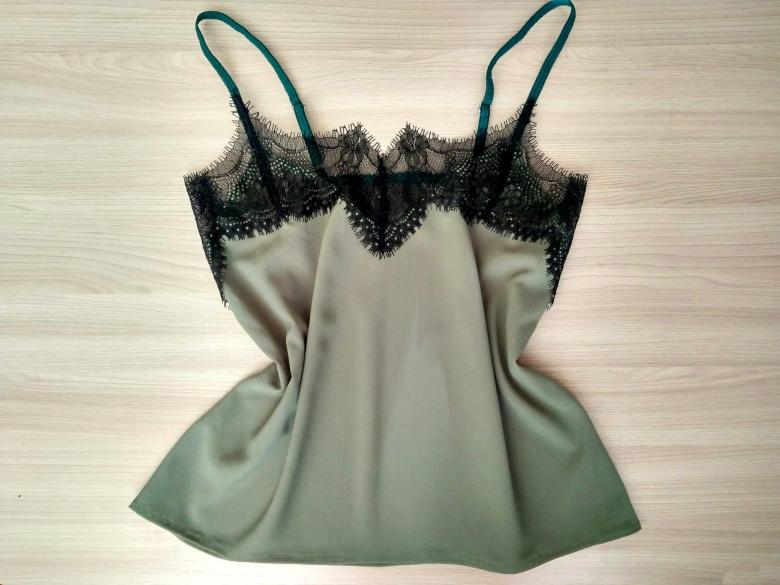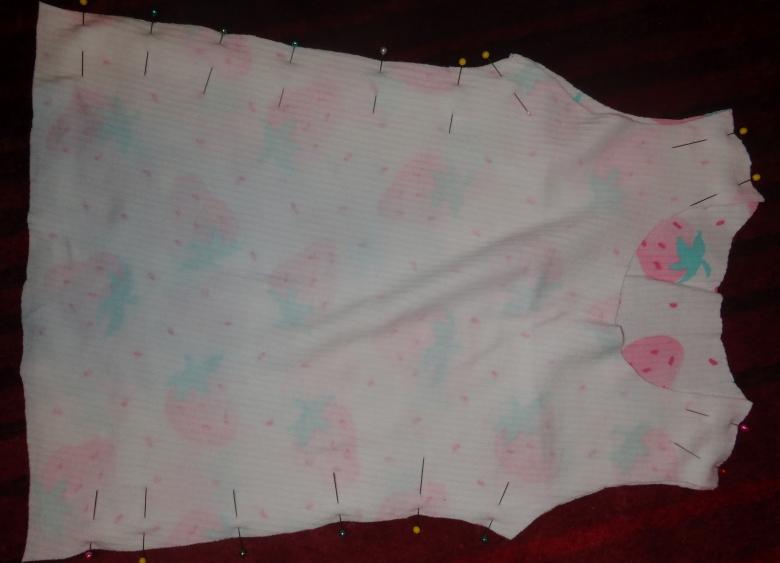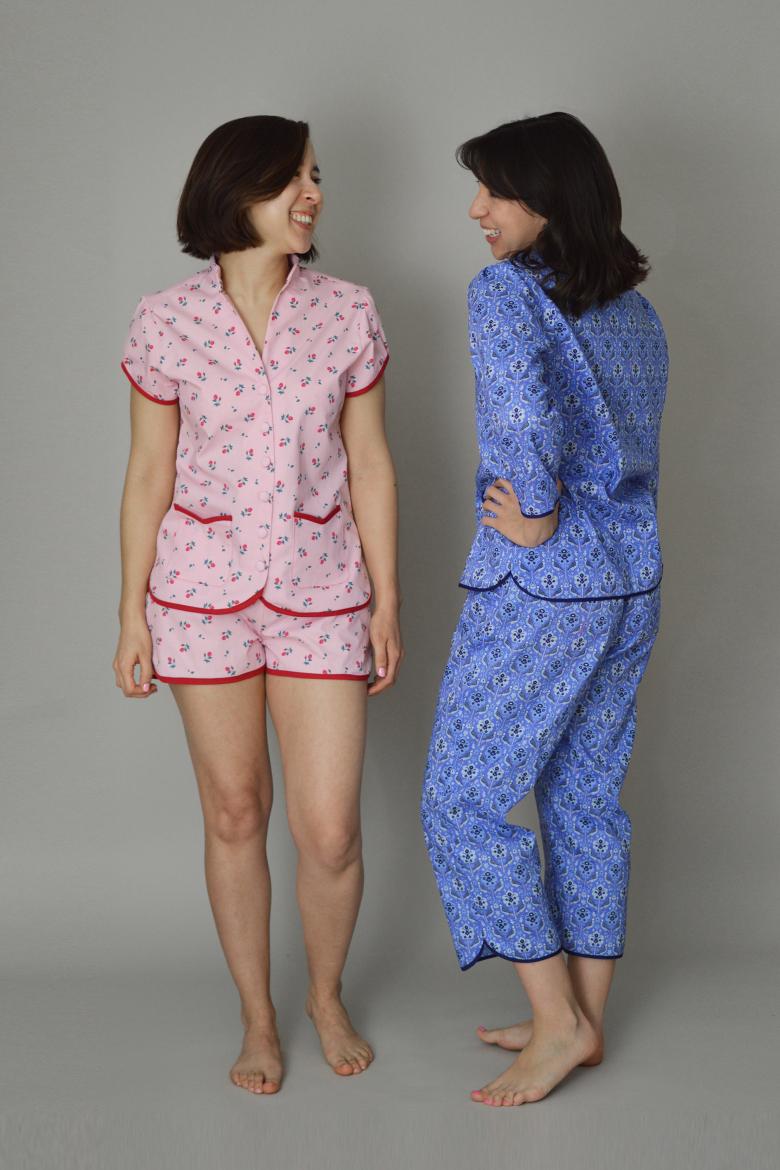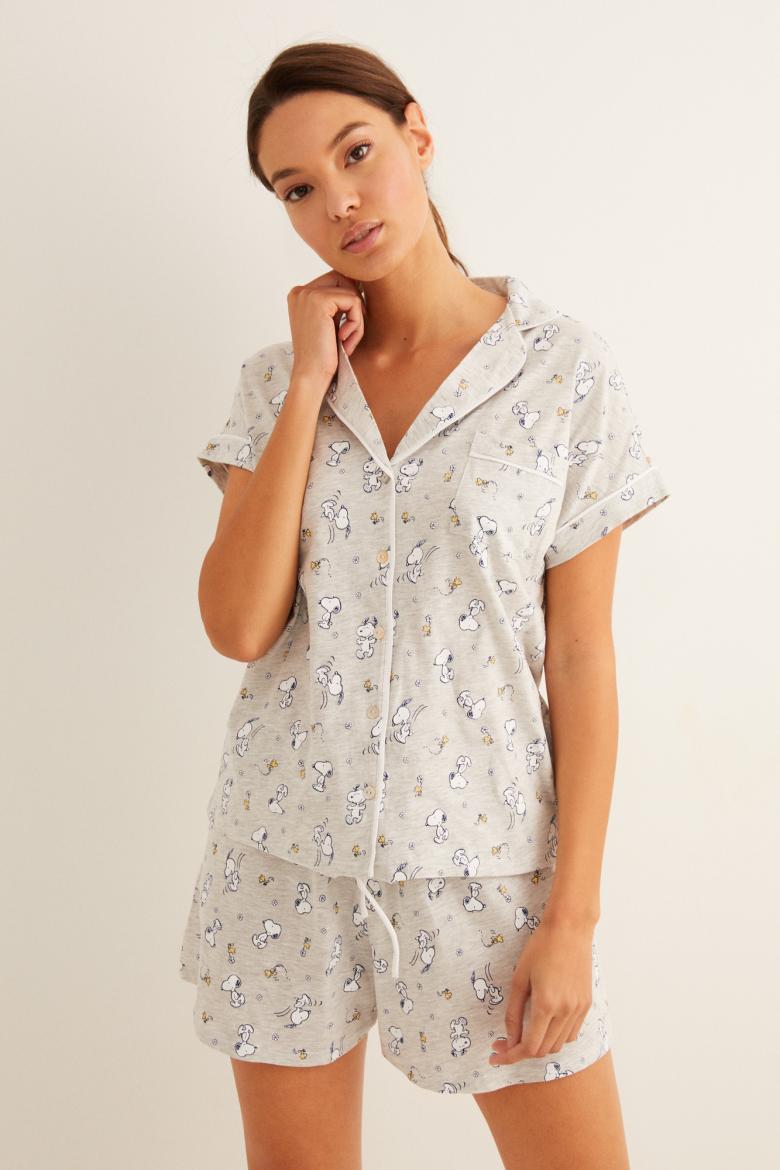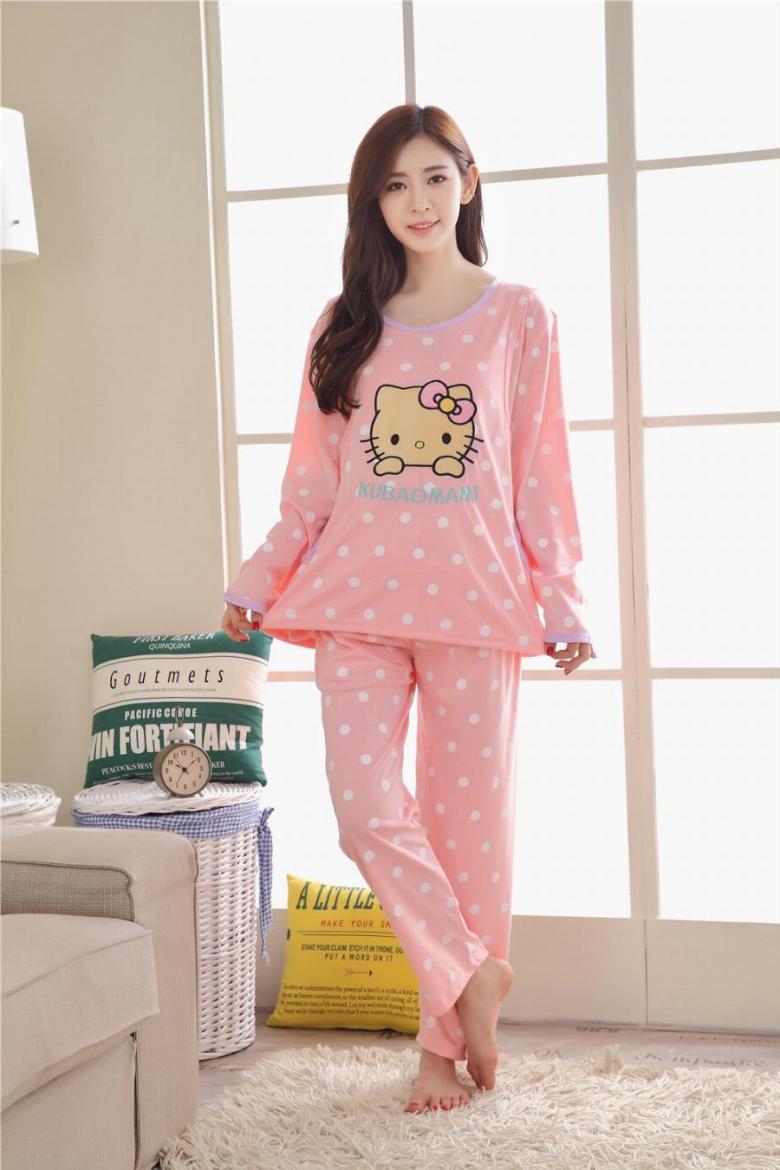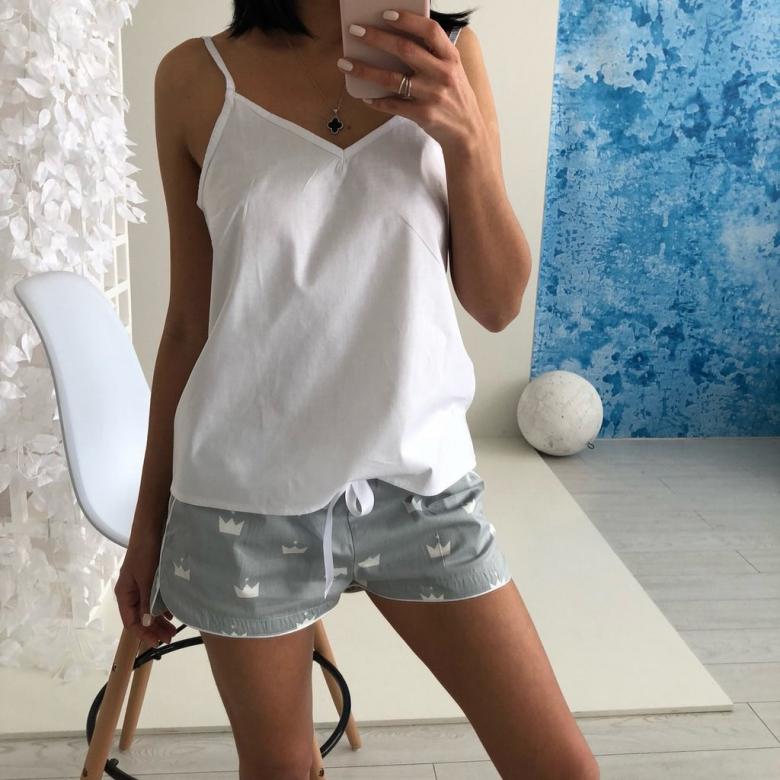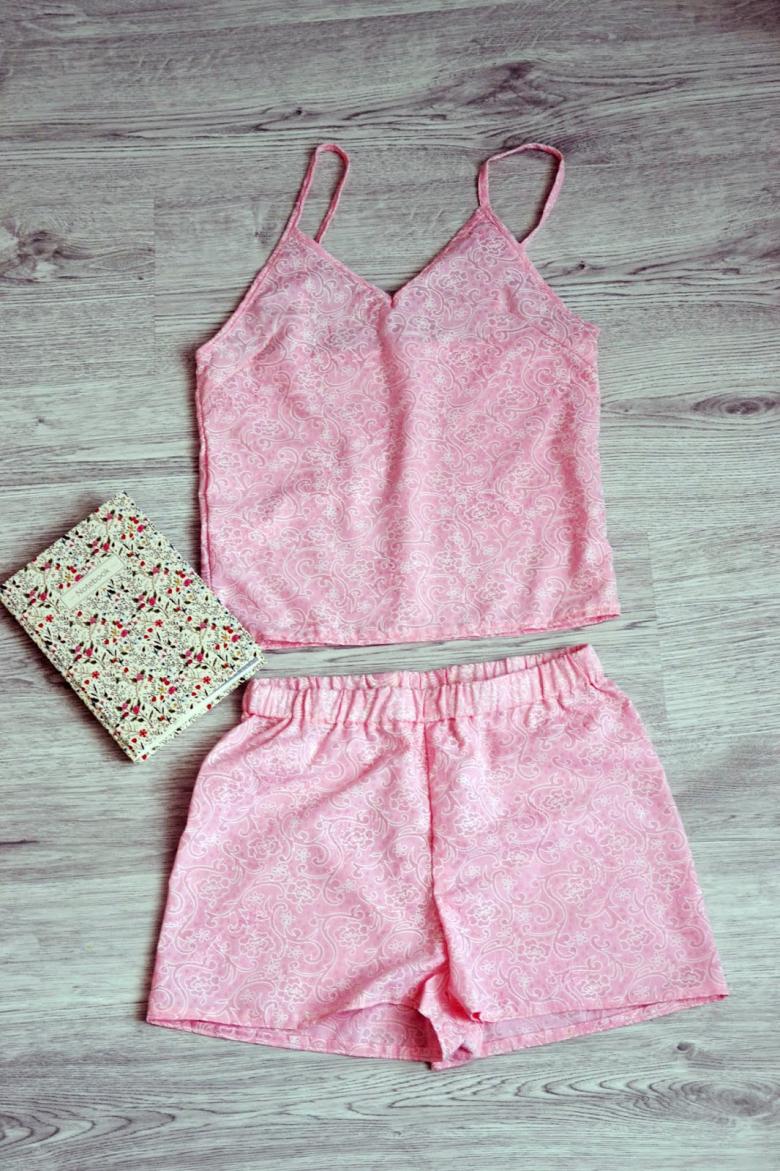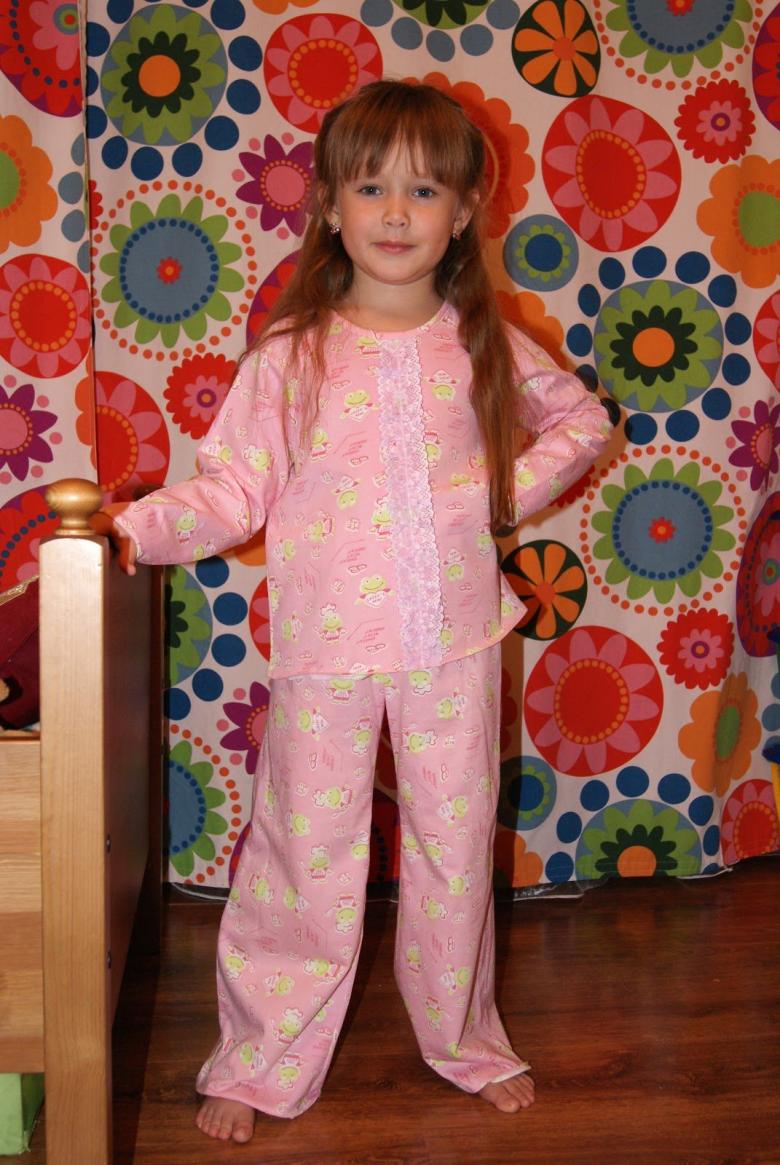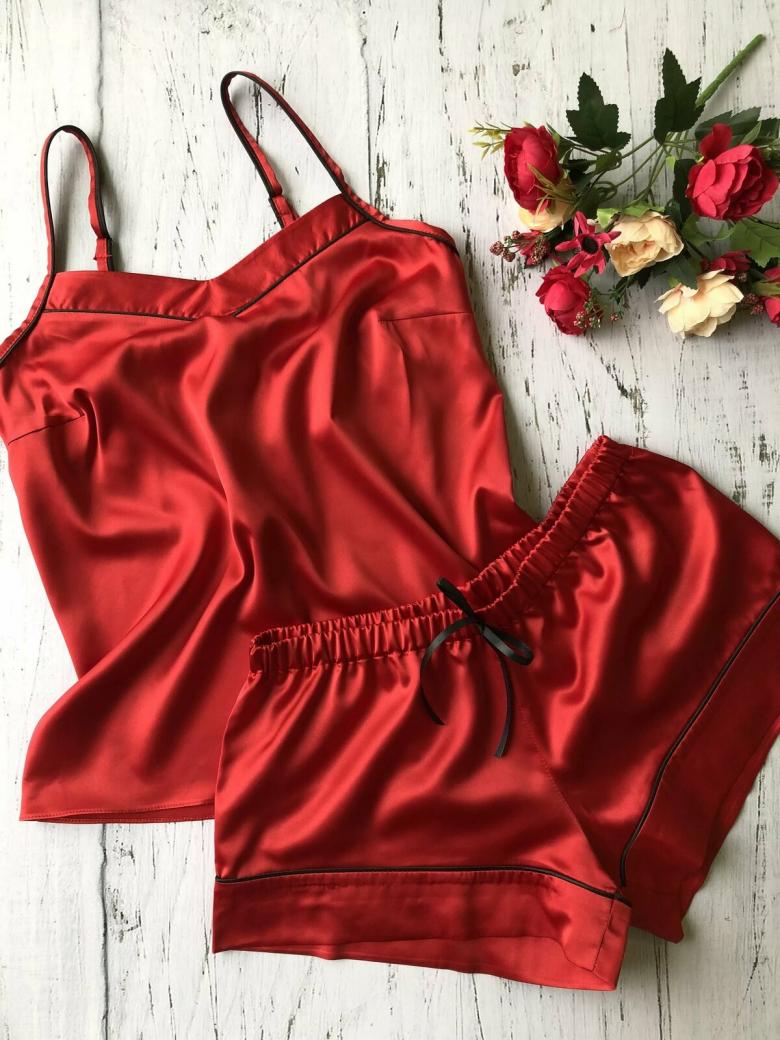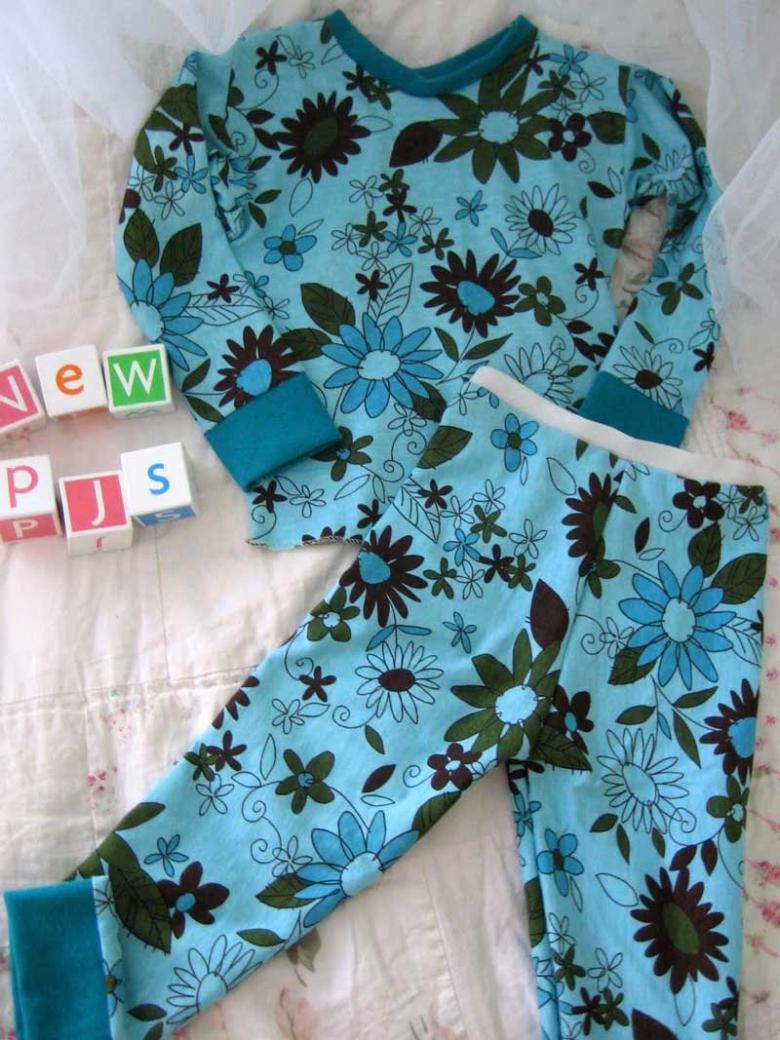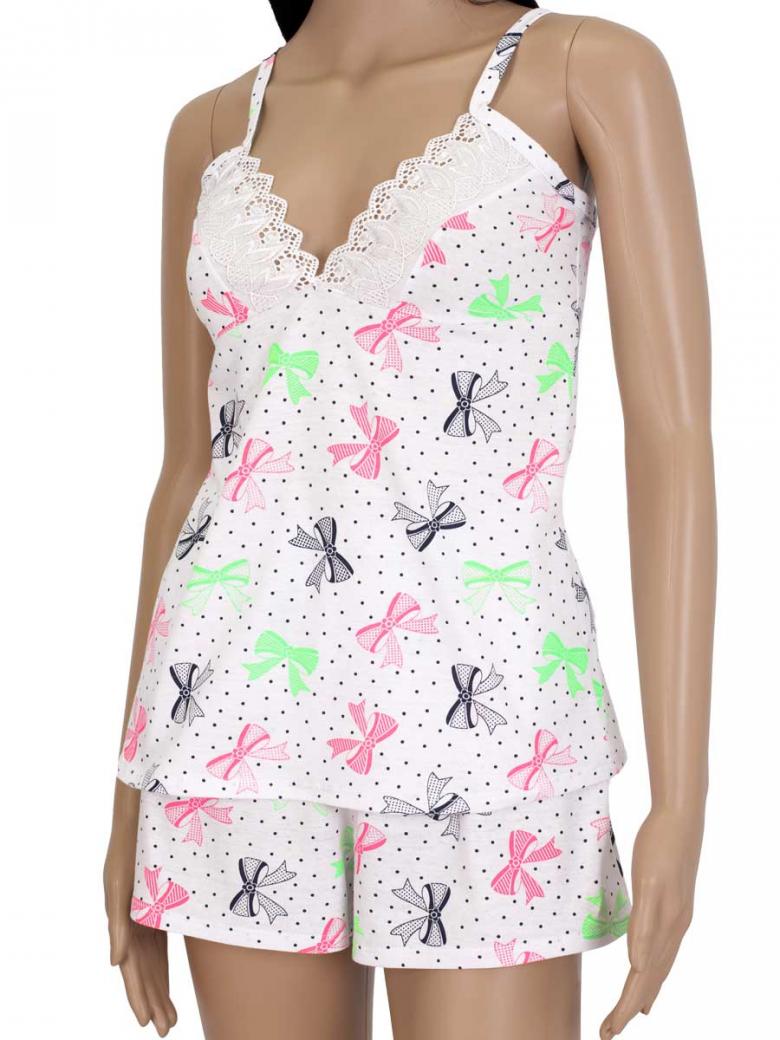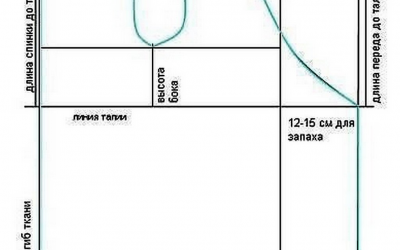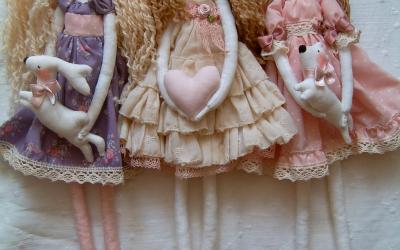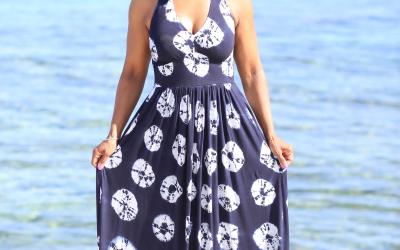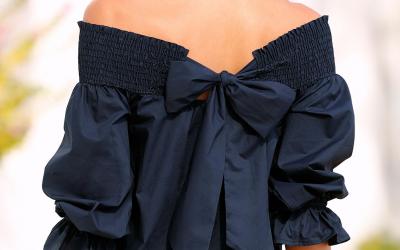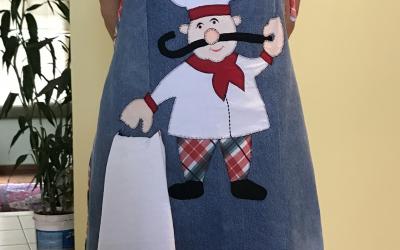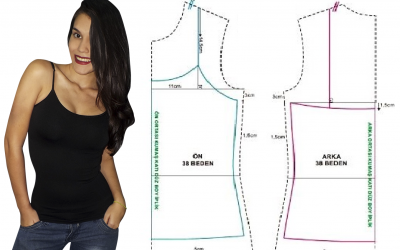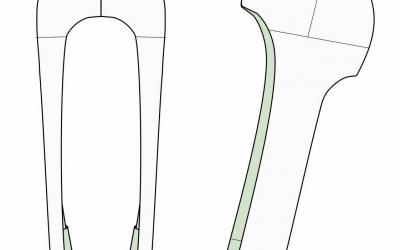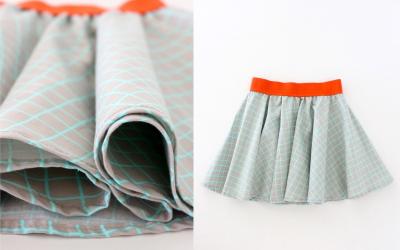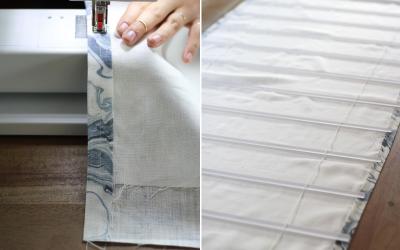How to sew pajamas - diagrams, patterns, features and nuances of sewing
Pajamas are a great detail in women's, men's and children's closet. They are ideal for sleeping at any time of the year.
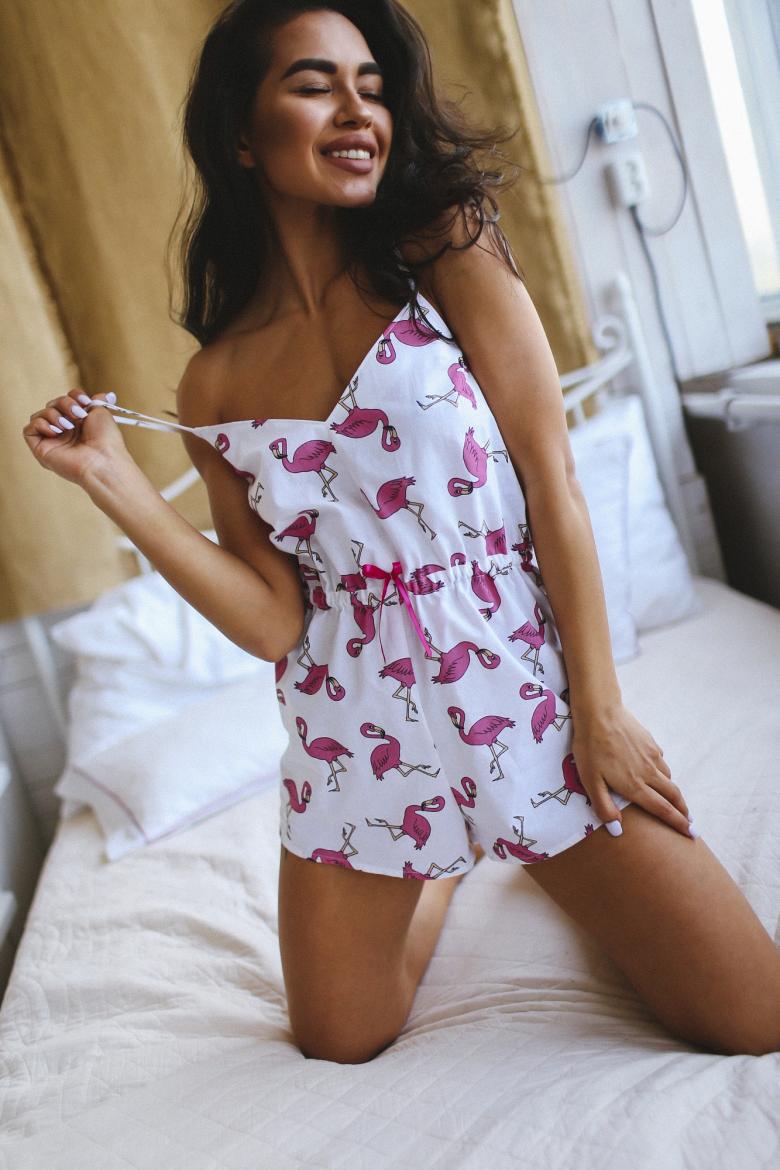
Pajamas in the closet
For a comfortable sleep, there is nothing better than beautiful and stylish pajamas. They can come in a variety of variations, made of different materials. Fabric and ready-to-wear stores are ready to offer their customers a wide range of products for every taste.
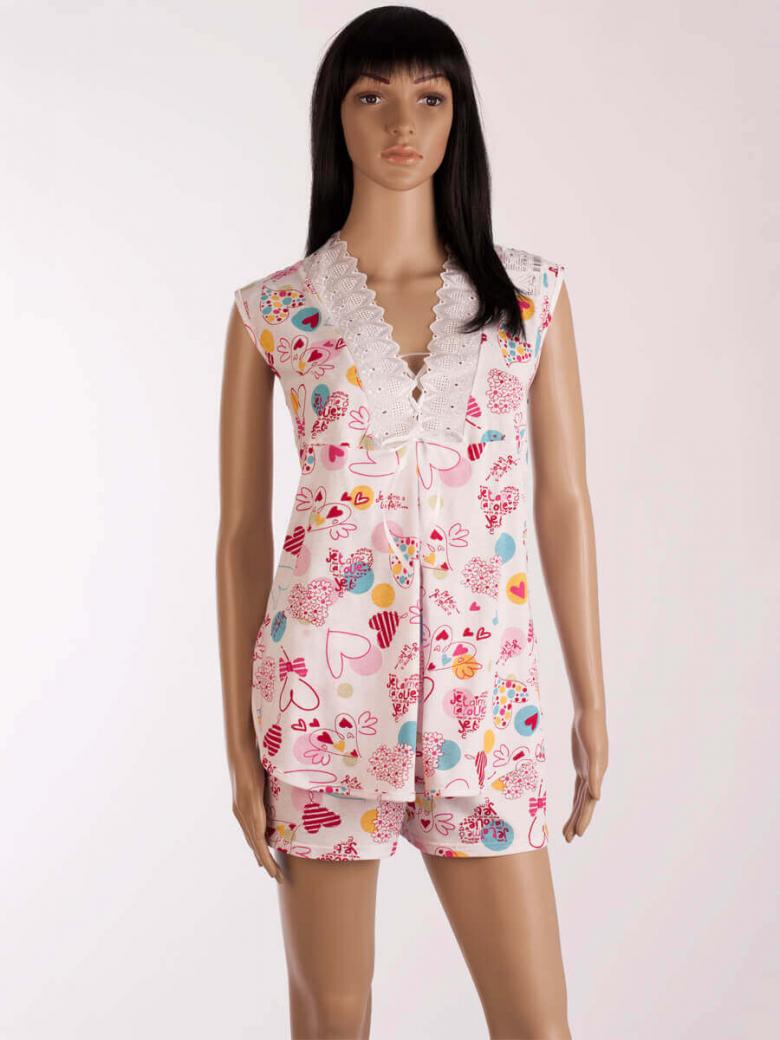
However, the most original pajamas can be made with your own hands at home. It is not necessary to have special skills and craftsmanship, it is enough to have a proper possession of the needle and thread. And step by step instructions, video tutorials from experienced needlewomen will allow you to master the further course of sewing.
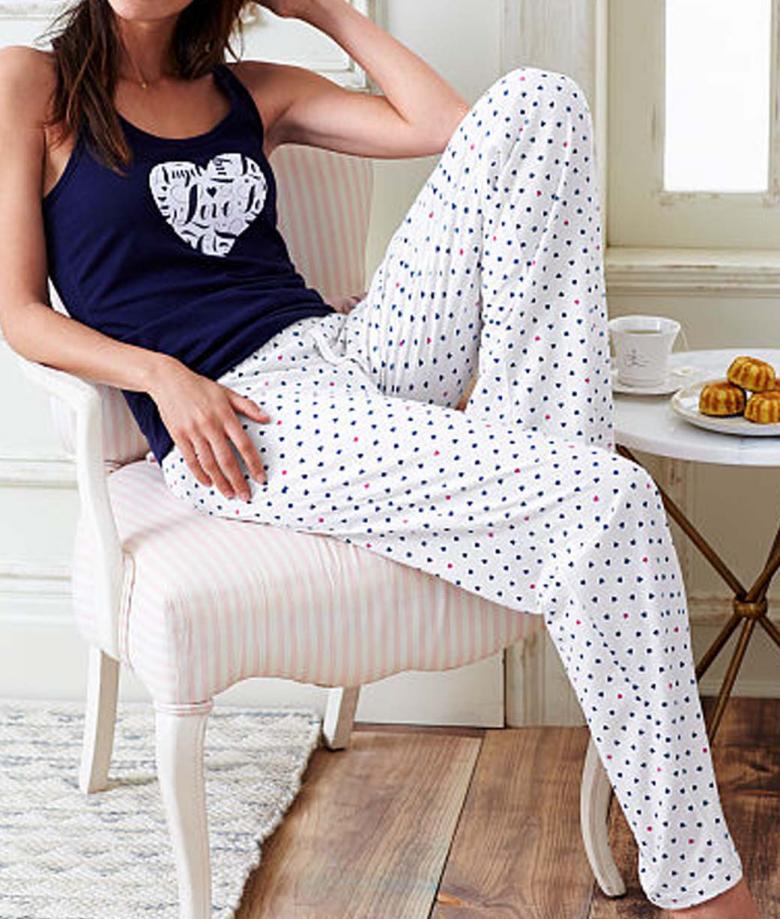
Types of pajamas for independent work
Any model of pajamas contains two main elements: the upper and the lower part. In this case, the upper half can be presented in the form of a T-shirt, T-shirt, light top or insulated blouse with long sleeves.
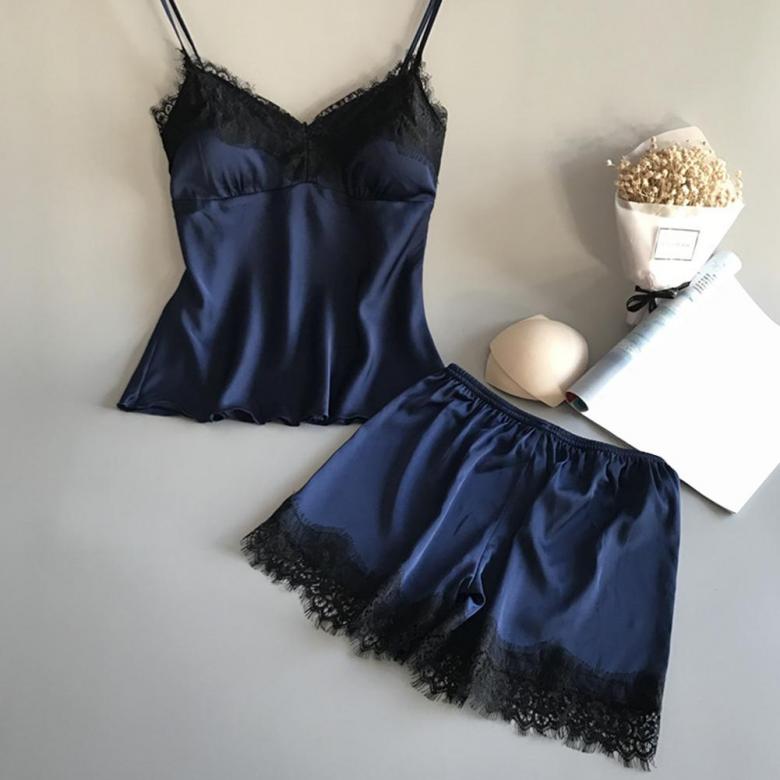
The lower part may also be sewn in the form of pants, short shorts or breeches of medium length. Choose the form of sewing, depending on the season, type of heating in the apartment (private house) and personal wishes of the owner.
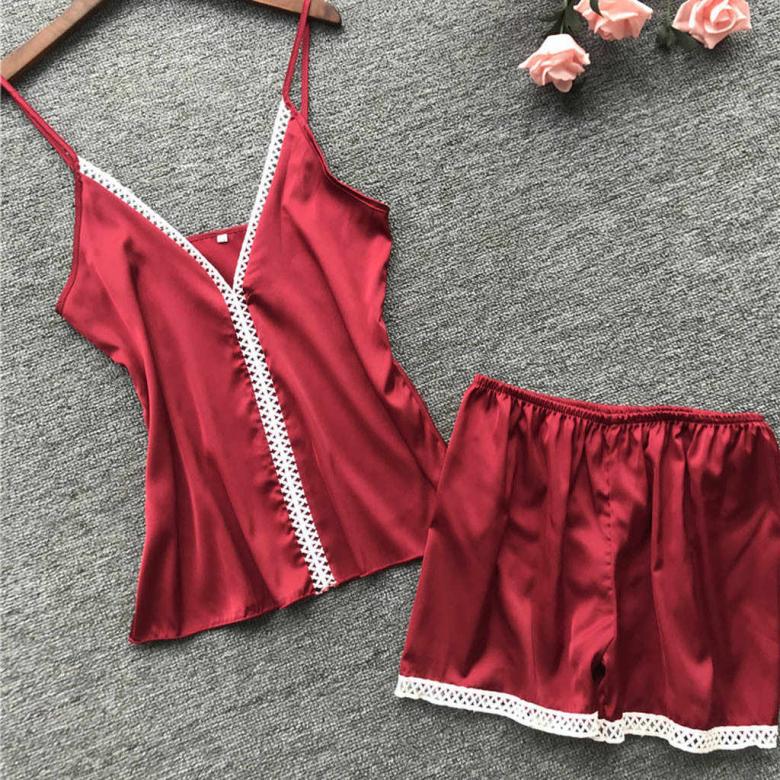
Step by step sewing pajamas.
Getting to work, it is necessary to remember that inexperienced mistresses should start their independent activity with simple works. It is better to give preference to simple models of pajamas, which have no auxiliary decorating details, intricate buttons, hooks, cords.
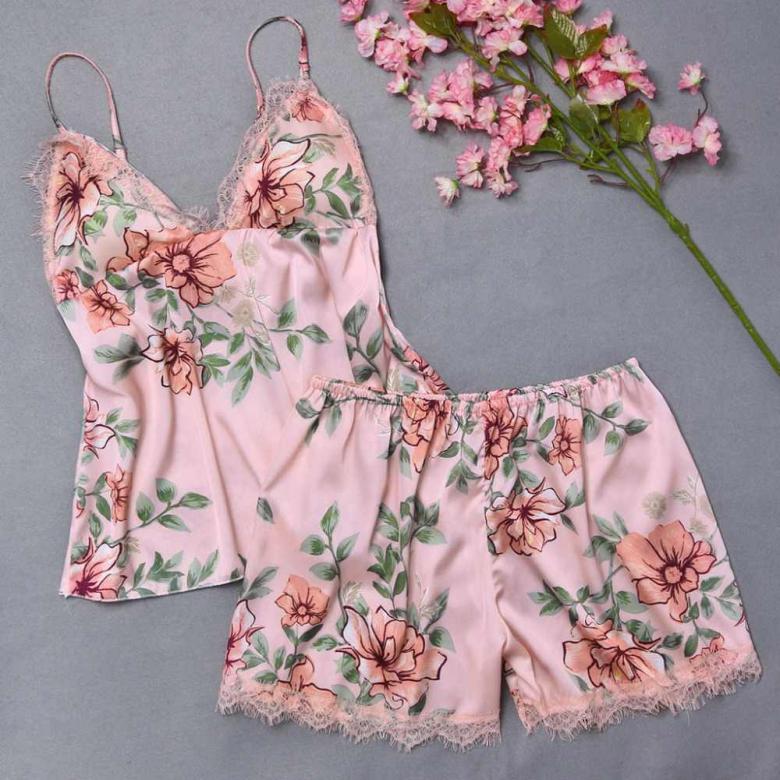
Also you should consider the purpose of the homemade product. For a young child, it is better to choose pajamas without clasps, small parts that a child can tear off and accidentally swallow.

Selection of tools for work
Begin an independent sewing activity should begin with the organization of the workplace. Working with the needle and thread involves painstaking work and constant eye strain. In order to reduce stress on the muscles of the back, arms and shoulders carefully select the height of the table and chair.
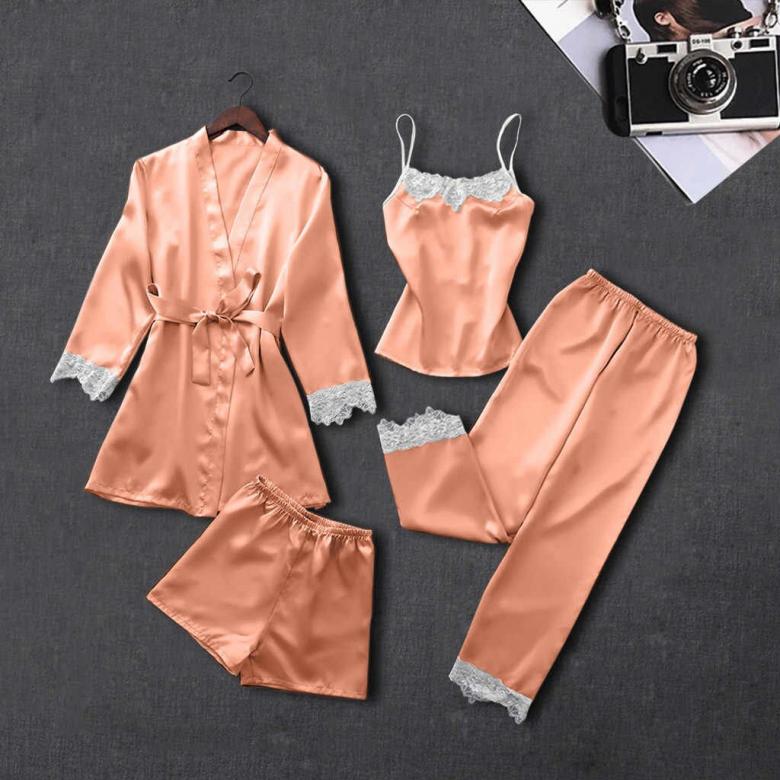
To relieve the muscles of the eye the optimal level of natural and artificial light should be prepared. The following set will also be needed in the work:
- A set of templates for preparing cutouts.
- Sharp scissors that will not tear the edges of the textile.
- Measuring tape.
- Pencil.
- Sewing machine.
- Decor elements (if they are still provided for this model).
- Thread, needles for hand stitches.
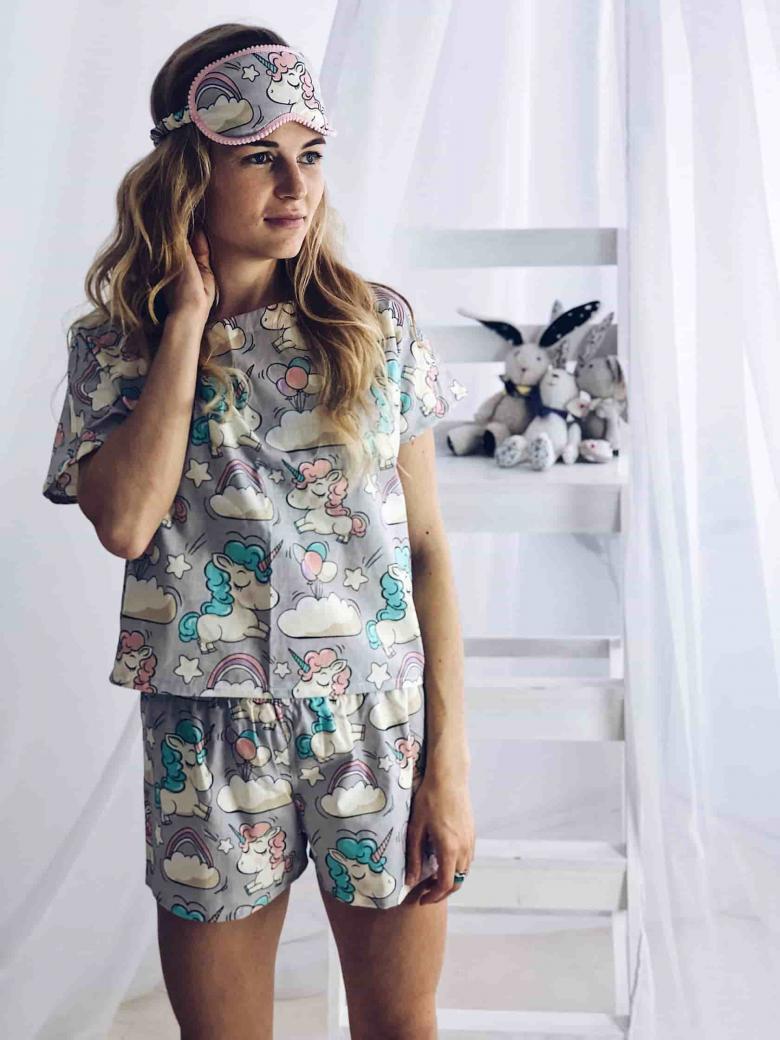
May also be useful step by step instructions for sewing pajamas with a detailed description of each step of the work (for example, how to sew silk pajamas with short shorts).
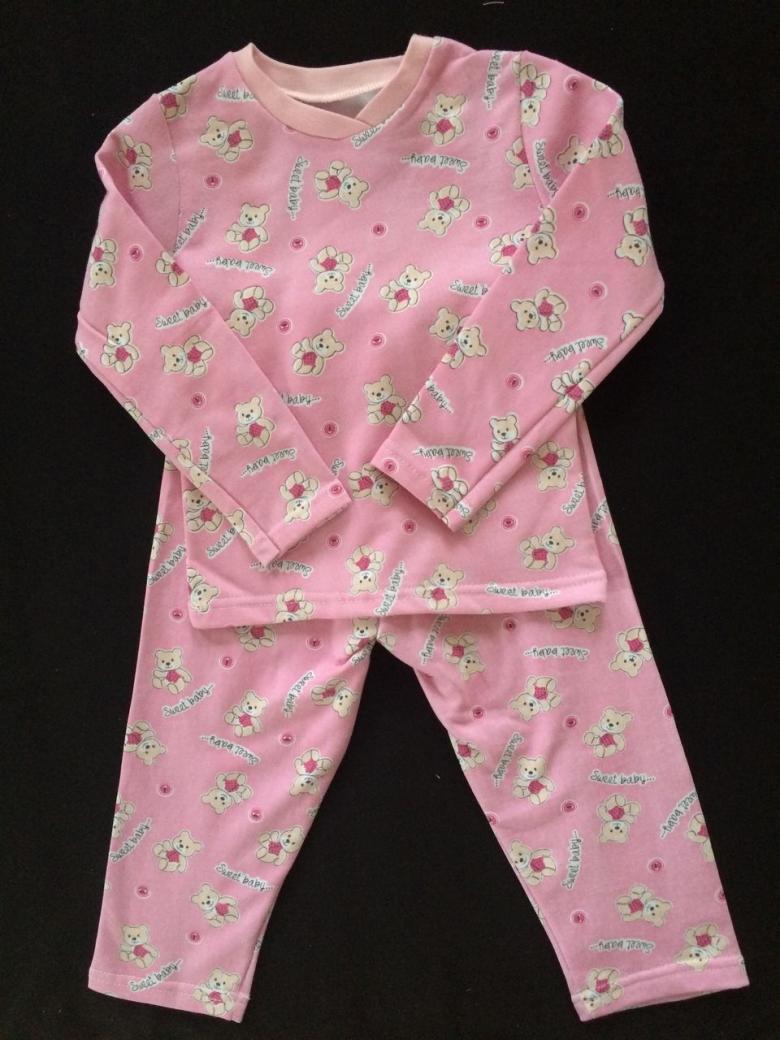
Selection of materials for sewing
The next stage in the independent work is the optimal selection of textile base. In this case, first of all, a number of individual features of the future owner is taken into account:
- Age.
- The presence of allergic reactions.
- The sensitivity of the skin.
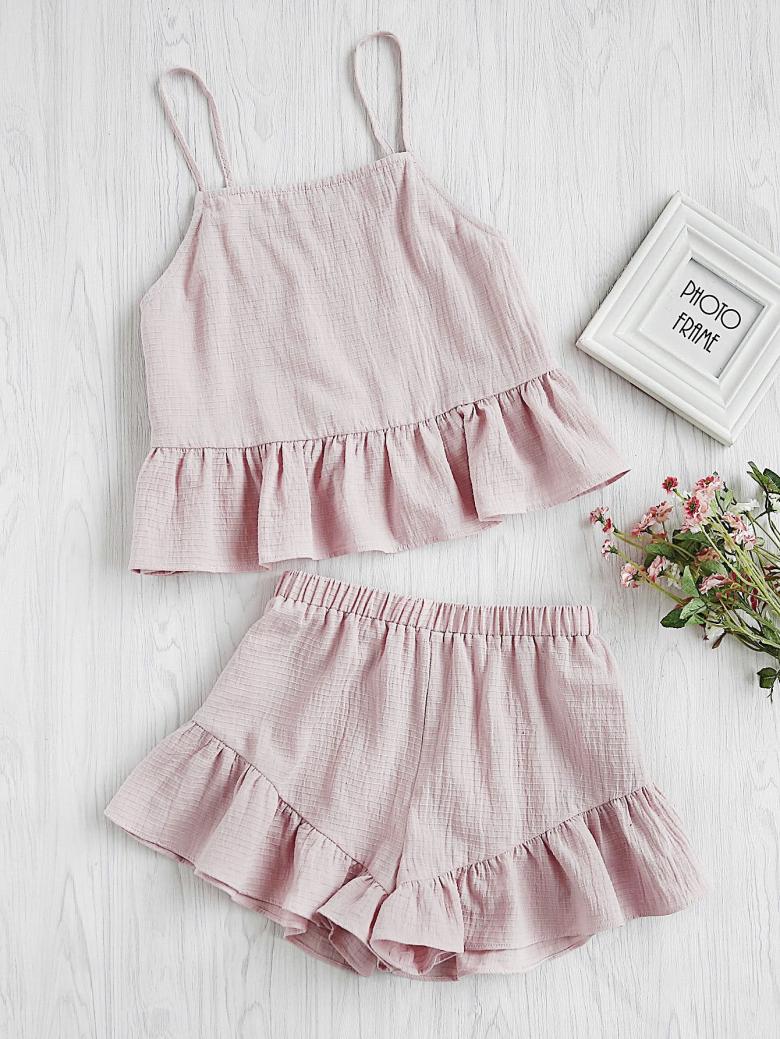
To date, there are three groups of fabric bases on sale: from natural threads, synthetic and combined fabrics. Each presented option has a number of advantages and disadvantages of practical choice.
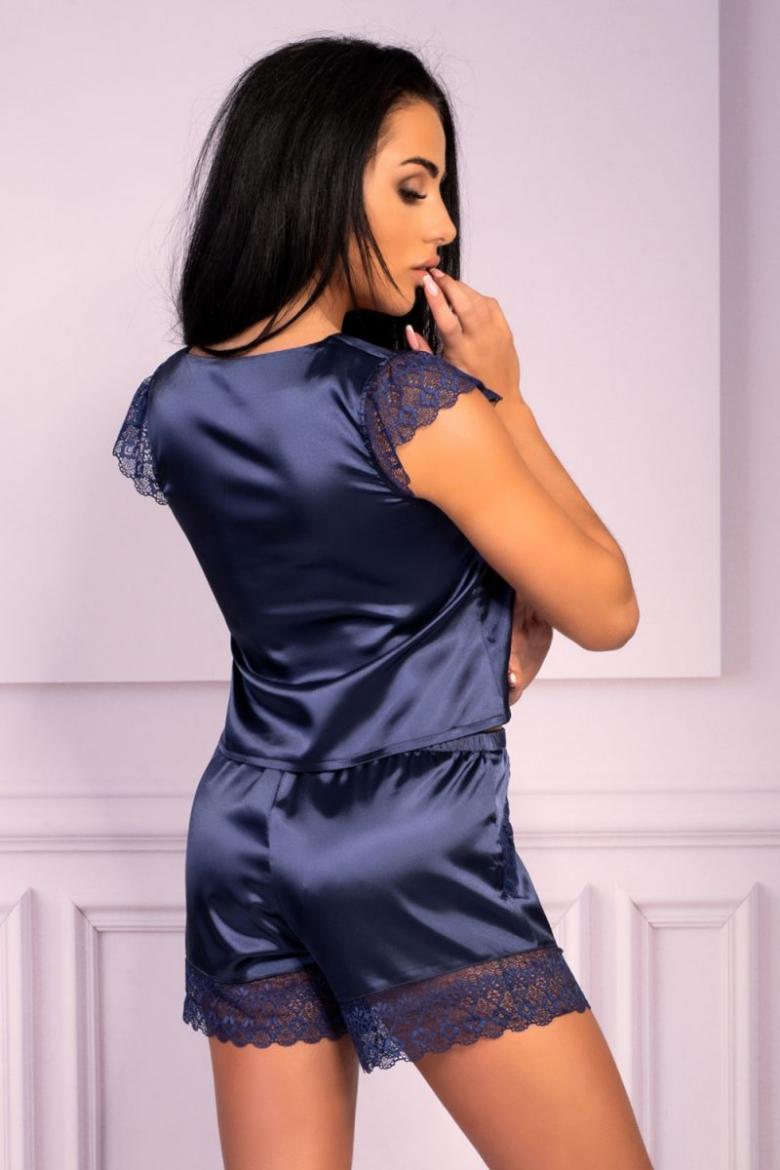
Natural fabrics are excellent air permeable, allowing the skin to breathe. In addition, they do not warm the skin, do not absorb unpleasant odors, do not cause allergic reactions. However, with the presence of a large number of advantages, such fabrics are not without disadvantages.
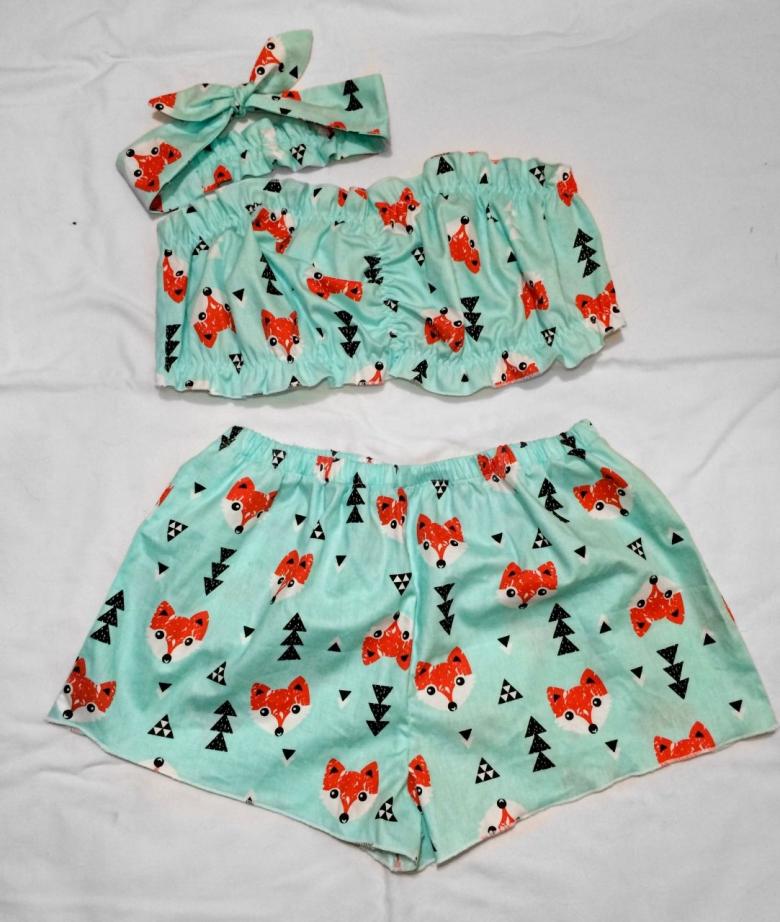
Pajamas sewn exclusively from natural fibers quickly lose their shape, give shrinkage, lose their original color. Synthetic fibers are durable, not afraid of frequent washings, do not lose color. However, for children's pajamas this option is absolutely inadmissible due to frequent allergic reactions to delicate skin.

Artificial fabrics are poor air permeability, can irritate the skin, and also quickly absorb the odors of sweat. For this reason, mixed types of textiles, in which natural and synthetic threads are in optimal proportions, are very popular today.

Pattern preparation
In any situation, an inexperienced needlewoman has the opportunity to use ready-made patterns. However, if you want to sew pajamas with a unique design, you should measure the circumference of the chest, the reach of the neck, the circumference of the waist.
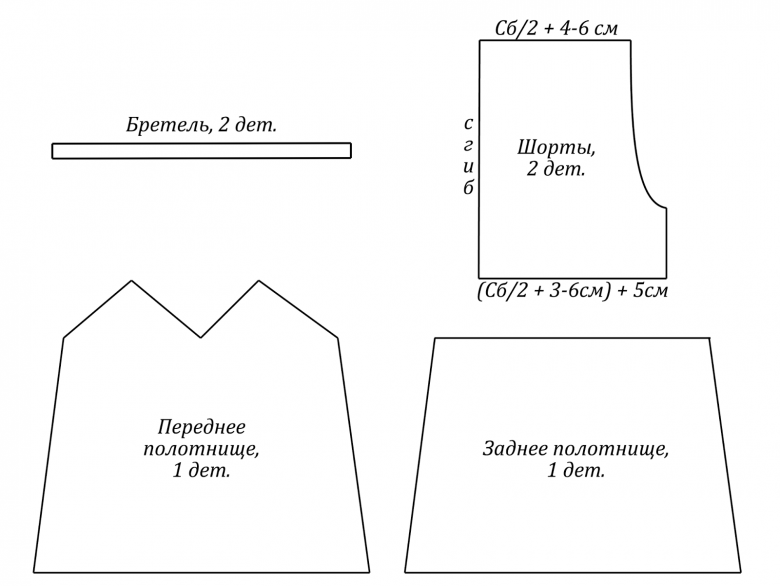
Next, you should calculate the height of the armhole and the ocale for the sleeve. For the bottom you will need to calculate the circumference of the hips, the length of the pant legs. For long pajamas, the width of the calf muscle should be pre-calculated. All the results obtained should be transferred to paper, using a pencil and ruler.
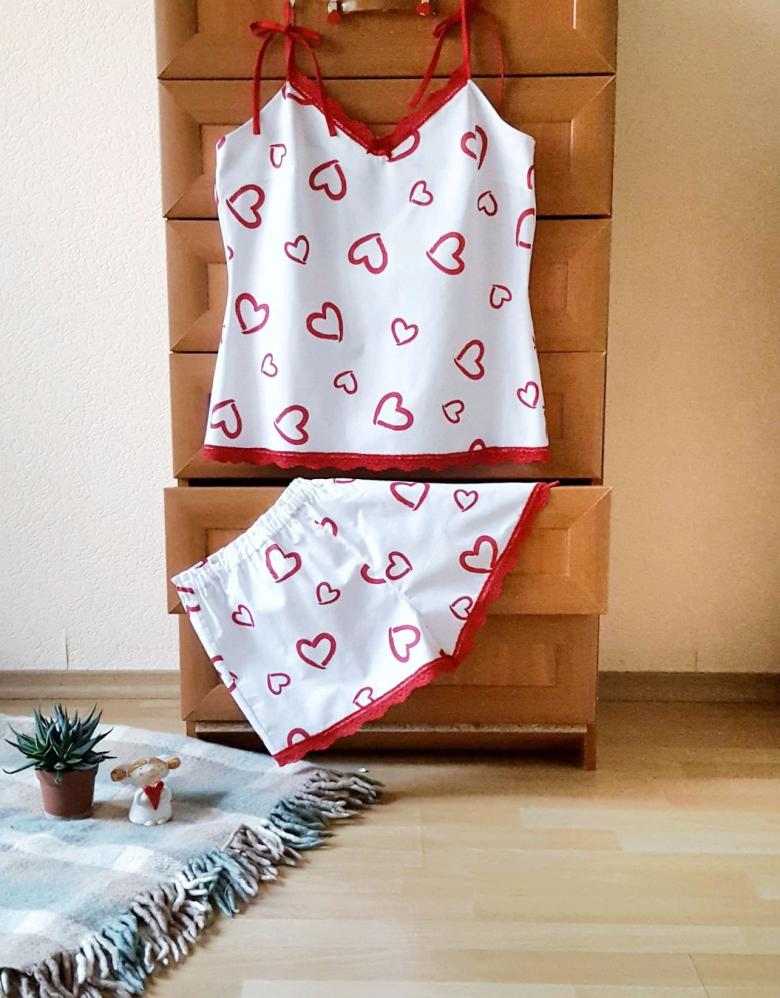
Preparation of parts and assembly of the product
The final, the same as the main stage of independent work, is carried out according to the following instruction, how to sew pajamas with your own hands for beginners:
- The prepared textile fabric is washed to provide the first shrinkage for the fabric.
- Then the textile is carefully smoothed with an iron.
- According to the pre-prepared patterns, cut out parts for the assembly: a single piece of the front, two parts of the back, sleeves (if necessary), parts of the bottom.
- In the process of marking (on the back of the textile) must leave 1.5-2.0 cm of fabric on the seams. When cutting out elements use only sharp sewing scissors that will not leave jagged edges and uneven cuts.
- Iron over the edges of the textile, left on the seams.
- Using a thread and a needle, hand stitch the joints of the parts. Use the technique of large hand stitches, which will then be easy to remove.
- For a tank top or a light top are sewn straps, tuck the edges of the neckline and notches okatah. Also stitched with large hand stitches.
- The next task facing the seamstress is to work with a sewing machine. All hand stitches must be duplicated with neat stitches.
- After assembling the lower part (pant legs, short shorts, breeches) the upper contour is stitched, leaving a small channel inside. Through this channel there is an elastic band or a lace that allows you to hold the pajama pants on your hips.
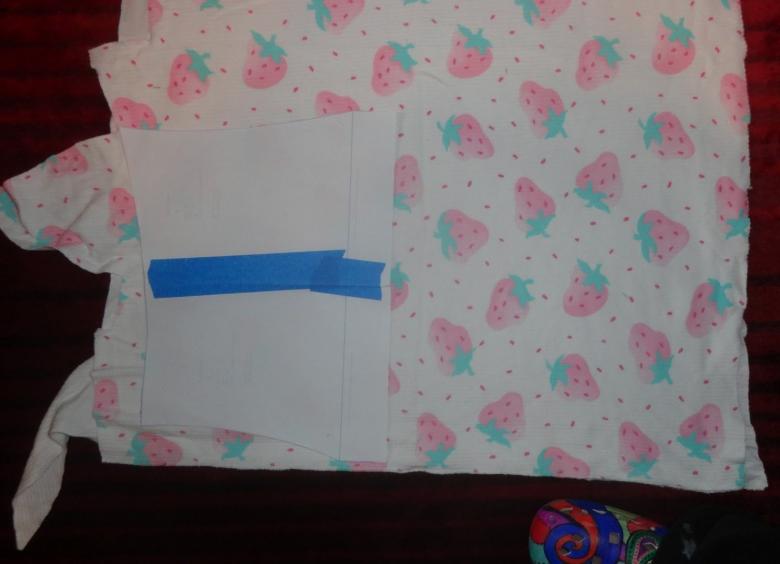
Beautiful decorative stitches can be used for the edges (the neckline, sleeves or cuffs). Also for adult pajamas, lacing along the front surface of the jersey, small buttons, and soft velcro are used. For independent work you can use the detailed instructions on how to sew pajamas from satin with lace. Such accessories will become a real decoration of any fashionista's closet.
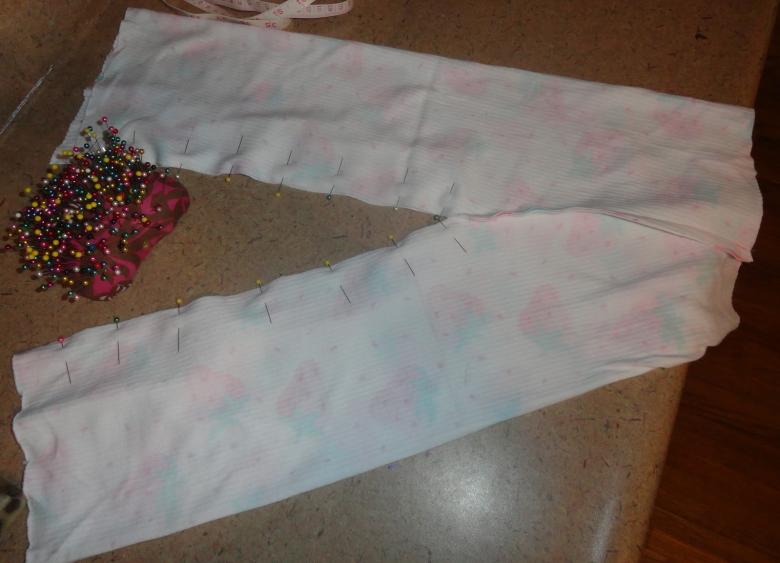
For children's pajamas there are a number of features of tailoring: you need a complete absence of small parts that will rub the delicate skin of the baby. It is also better to give up the excess of seams, fasteners, buttons.

